So after I finished my trip to Komatsu (well, “trip” is maybe a bit too big of a word given that it was a day trip), I still had the Sunday of that weekend remaining, not to mention the night. So it occurred to me that it was maybe a good idea to pack it up with another trip somewhere; I browsed around reward flight availability on British Airways’ Avios page, and found a very early morning flight to Miyazaki with a return back to Haneda early Monday morning – landing at 8am, which was perfect. So off I was!
The first thing I decided to do is not screw around anymore – my experience with Komatsu, where I got off at the wrong bus stop and wasted time looking for a car (or the earlier experience with Wakkanai, where I had to run bus to bus and generally make my life unpleasant) taught me that a few dollars spent here and there can make your last minute travel far more enjoyable. There was also the reality that Miyazaki is a bit of a backwater, and although there’s “a” bus that goes “somewhere”, it’s hardly sensical to wait for it and be locked into its route. So I rented a car.
Having become somewhat used to the Jaguars and the Corvettes of Sixt, this was a bit of an opposite spectrum experience, but hey, it’s Japan, so what the hell, roll with it.
I split my day in half. I figured I’d spend the first half of the day in the city of Miyazaki visiting some of the local sightseeing spots, and then take a drive down towards Nichinan to see the coast and the further away parts of Miyazaki. So I first went to the Peace Memorial park in central Miyazaki. It’s an oddball monument with a curious history. Built in 1940 to celebrate 2,600 years since Emperor Jimmu, Japan’s first emperor, it is built using stones from every corner of Japan. As such, it was a symbol of unification, and was used as a sort of rallying cry for the kamikaze pilots that launched from a nearby airbase for their final missions. On its inauguration in 1940, it had a slogan inscribed on it, Hakko Ichiu (八紘一宇), which meant “eight corners of the world under a single roof”, and as usual in political appropriation, because the original context was unclear, the then-generation rulers appropriated it to their own needs and the slogan came to signify Japan’s dominance over the world, and hence became a symbol of the second world war. (whew! That’s a lot of hyperbole and shortcuts, which demonstrates incredibly well how populism doesn’t give half a shit about history, and loves to bend interpretations to its own needs). The American military demanded that the inscription be removed after Japan’s defeat (as a “promoter” of wartime spirit), and so it was; but in 1964 for the Tokyo Olympics, some local interest groups petitioned the government to re-inscribe the slogan with a “new” interpretation of Japan being a leader in global peace and unity, and so it should you know, control peace in eight corners of the world from homebase in Japan, or something (don’t forget that nationalism ran, and still runs, very strong in certain layers of society in Japan) – and overnight, to prevent any peaceniks from scuttling the project, the slogan was reinscribed onto the monument, and thereon it remains to this day.
There it is, right in the center of the tower.
The view from the tower.
And a mysterious door leading somewhere.
Another view of the Hakko Ichiu.
Around the Peace Tower is a collection of haniwa figures. The haniwa date back to around the 3rd century AD in Japan, when they were used at burial sites to contain the souls of the departed, frequently adorned with weapons and shields to protect departed souls from evil spirits inhabiting the nether worlds. Of course, the haniwa in the Miyazaki park are not originals, considering that they represent national treasures at this point and are mostly stashed away in museums, but they are nevertheless an interesting sight.
They are often placed in circles around burial areas to protect those interred within.
Warriors protect the grounds.
Some look in shock and/or awe of something they saw beyond.
Others are more serene.
There’s quite a forest of them.
Not all are somber and serious, though – some are actually happy!
Their happiness is protected by serious warriors, though.
I also briefly walked by the Miyazaki-jingu, but it’s a somewhat touristy temple complex, so I wasn’t particularly interested in exploring it, so I went on.
This part of the trip took me about half a day, so I decided it was time to head to Nichinan, as it was a good 1.5 hour drive and it was getting on in the day – I needed to make it to Aoshima and to the Moai statues before everything closed around 5pm. But first, I stopped for lunch at an old landmark – Ogura Lunch. It’s a place that basically invented chicken nanban about half a century ago, and the kitchy, flamboyant location is in the same place it was back then – it can get spectacularly crowded, so have to mind the time. I made it just before the lunch rush, so I was able to get in pretty quickly.

The interior decor is very US roadside diner 1950s, but that’s the theme they’re going for.
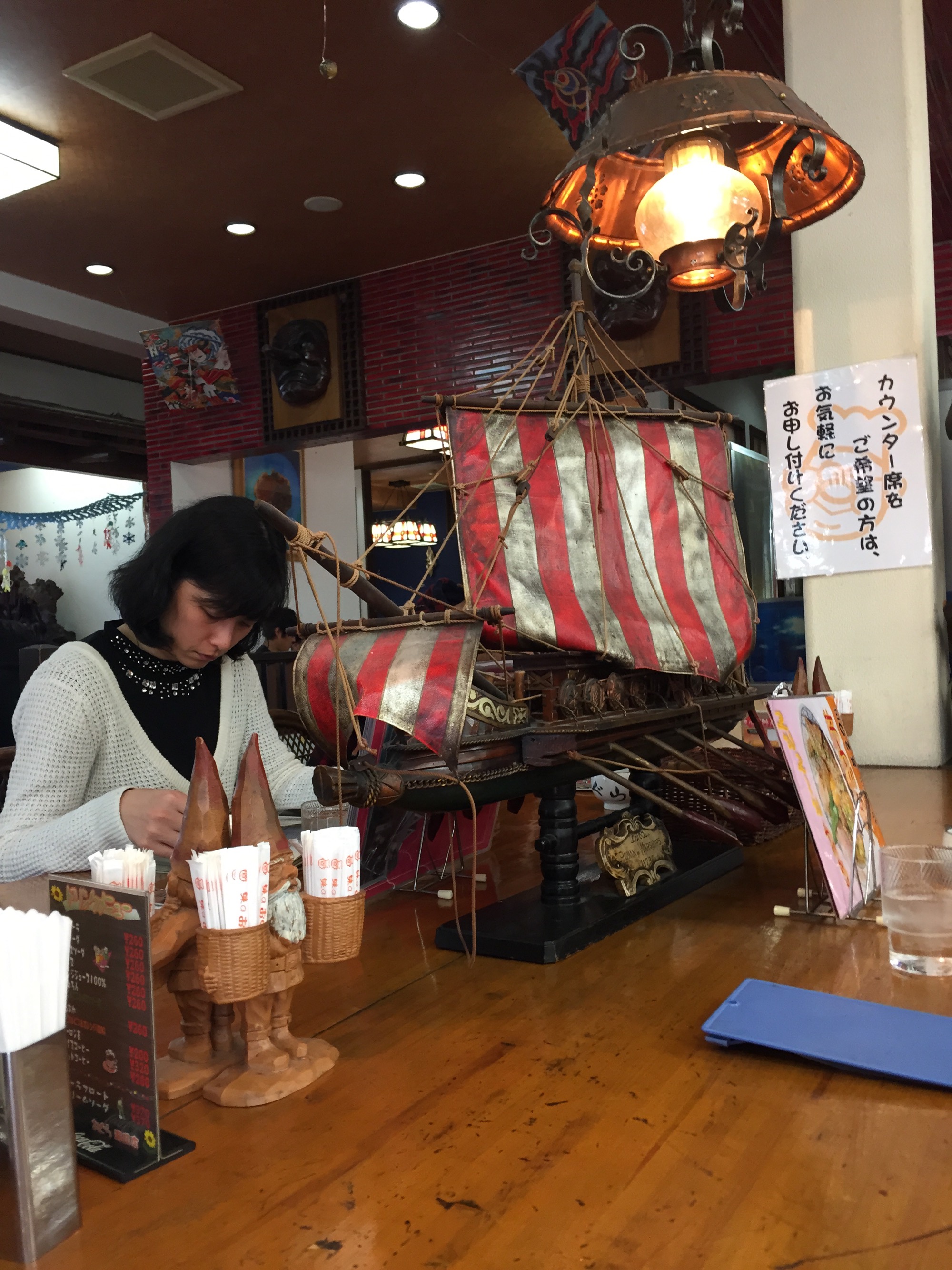
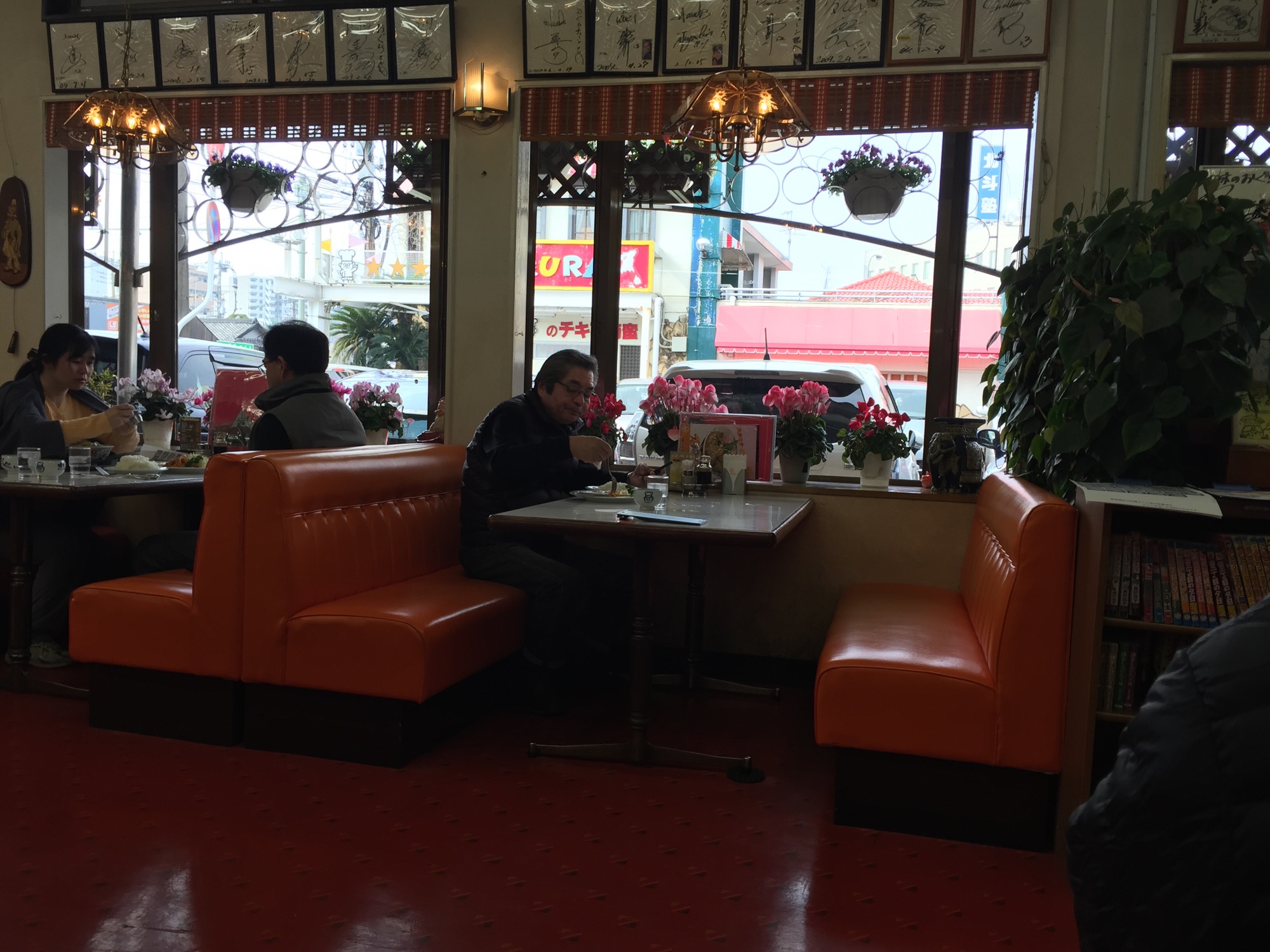

And this is the famous chicken nanban. It’s basically deep fried chicken in a sweet’ish sauce, with cabbage and a tartar sauce made of boiled egg, celery, mayonnaise, mustard and lemon juice.

Because it’s such a landmark, a number of famous Japanese actors, baseball players and so on have been by to sign autographs.

I haven’t a clue who any of them are, but hey, if they are important enough to sign these boards, then likely they are, you know, important. Good for them.

There’s even a sort of backyard with a garden of sorts.
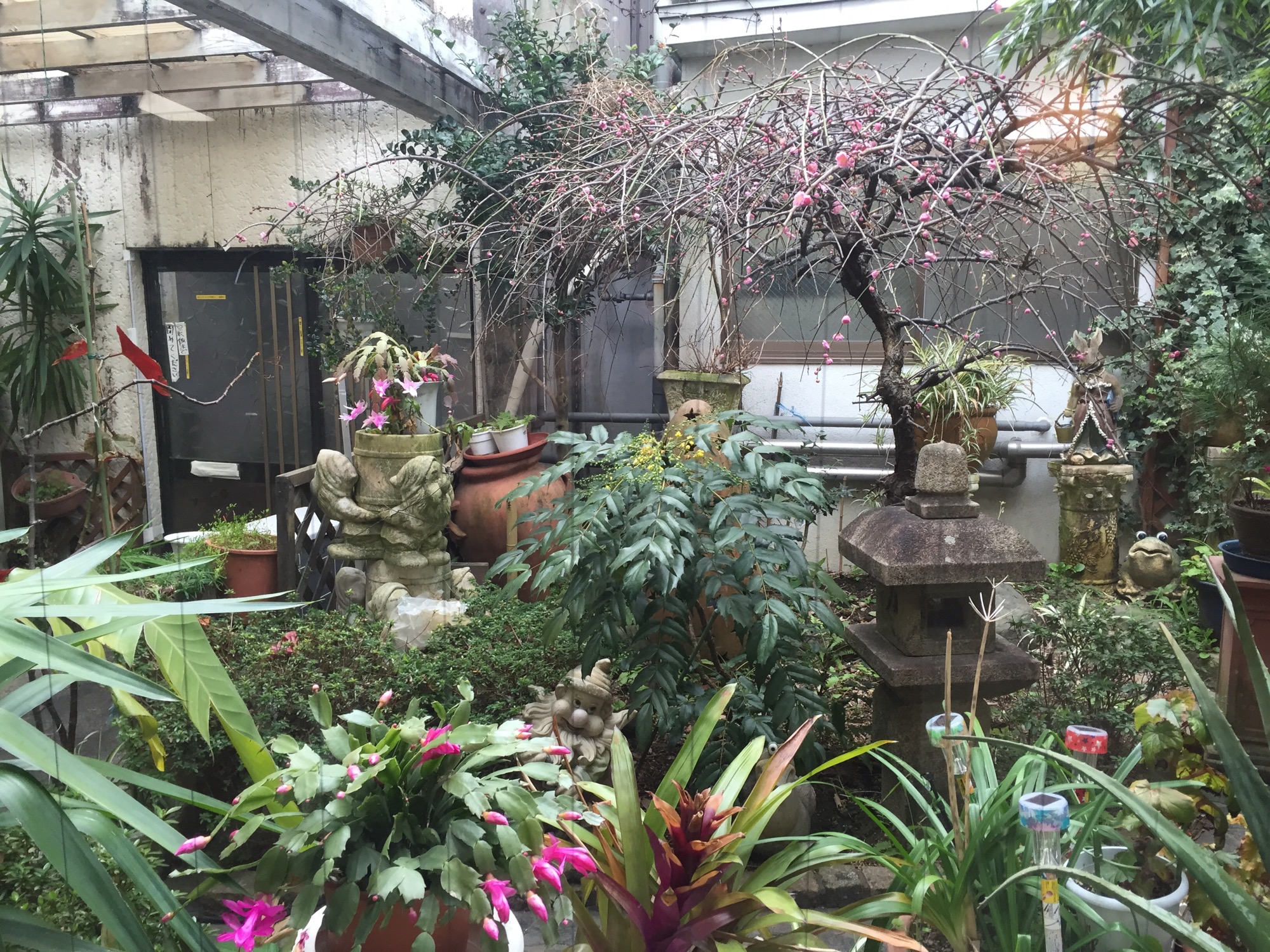
And fish that maybe make part of the ingredients? 🙂
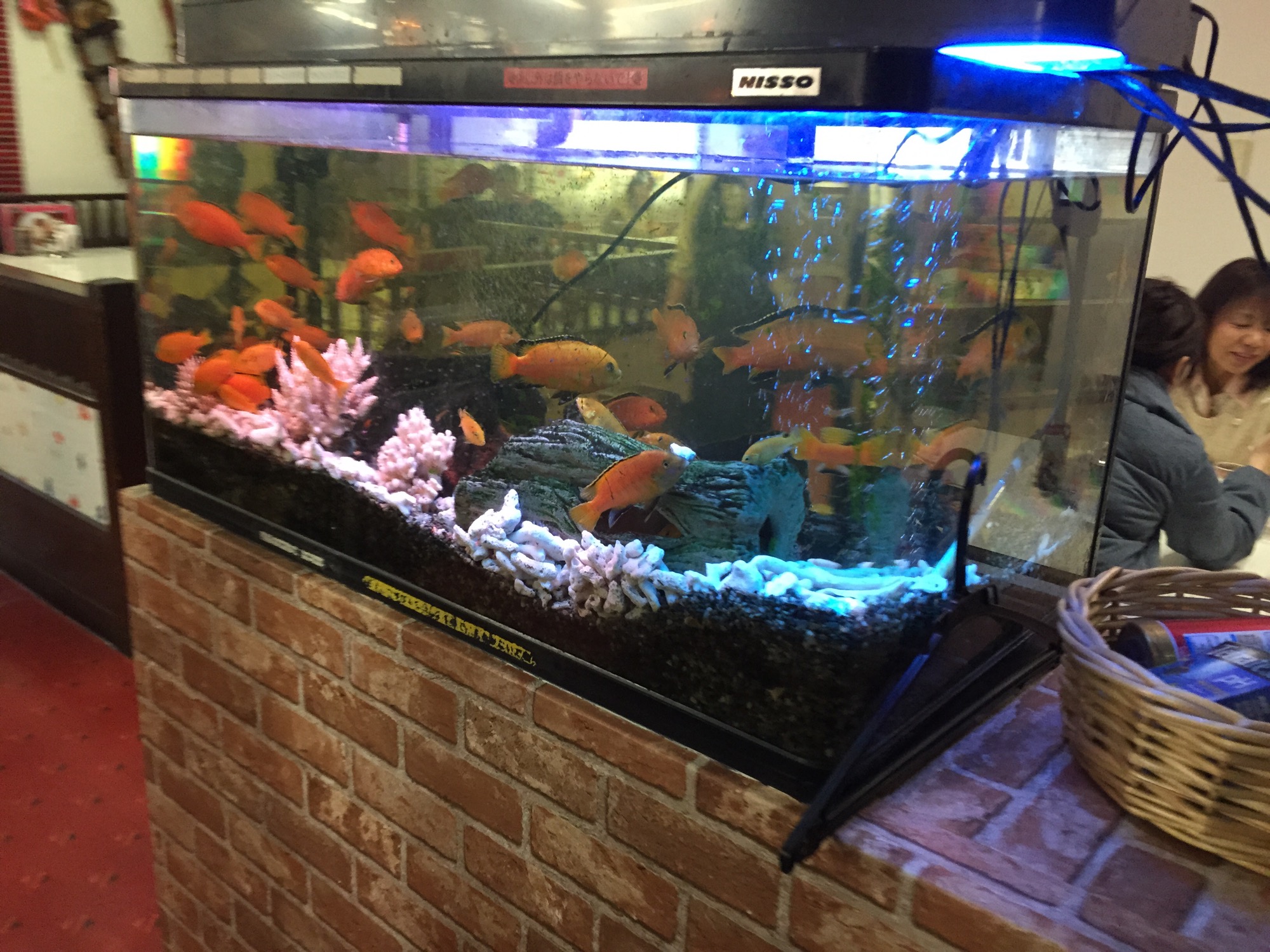
Anyway, after I discovered one of my new favourite delicacies in Japan (okay, maybe “delicacy” is a bit of an affront to the word itself, but whatever), I went on to Nichinan.
The Nichinan coast is a relatively calm, pretty formation with a road called the Phoenix Road that twists along the shoreline. There are actually some bays which have enough waves that people surf in them… and it was Feburary!
There are also fishing villages, as anywhere in Japan.
Eventually, I got to the Sun Messe Nichinan, which doesn’t even really feel like Japan… then again, it has freaking Moai statues, so there’s no reason why it even should.
A short walk up the hill…
…. and here they are!
Fun fact: the Miyazaki Moai statues are the only authorised replicas of the Easter Island ones in the world – actually authorised by Easter Island themselves! They are the same height, look, and everything. So if you can’t make it to Easter Island, this is about as good as it will get.
A further walk up a desert-like hill…
… and you get a nice view of the Moai with the Miyazaki coastline in the distance …
… a rock …
… some yellow men on a bench in permanent contemplation of the infinite dreamlike ocean (though one of them is facing the wrong way to do it)…
… and there’s even an insectarium there.
Looking back onto the parking lot of the Sun Messe…
… it was time to head back before sunset so I could still see Aoshima. On the way back, I stopped by a parking area which had palm trees and the bluest sky I’ve seen since Hawaii. I just had to stop and take a picture.
There was also a guy – and a dog – in a pretty cool aircooled Porsche by Nakai-san (this is a RWB, Rauh Welt Begriff-modified 911. Look him up).
Anyway, it was time to move on to Aoshima itself. Aoshima is a small island off the coast of Miyazaki with some peculiar rock formations. It contains a shrine that was placed there to bring good luck to married couples, but is also just a very nice, picturesque location.
The walkway over to Aoshima…
And those famous rock formations.
Someone managed to get a tuk-tuk over here for some odd reason. It even has proper Japanese license plates, hence it’s legal to drive! I’ll bet any money that this is the best-maintained tuk-tuk in the entire world.
The entrance to Aoshima Island.
Looking back at the walkway. Did I mention that despite the fairy-tale-like blue skies, the wind was absolutely incredible? Some people were desperately navigating the sand dune with their suitcases, as well.
The waves were breaking on the rock formation… another perspective of just how windy it was.
Entrance to Aoshima island proper.
The temple inside the island, with the ever-present green Japanese phone booth.

This was odd… I didn’t realise there’s a Michelin restaurant here??
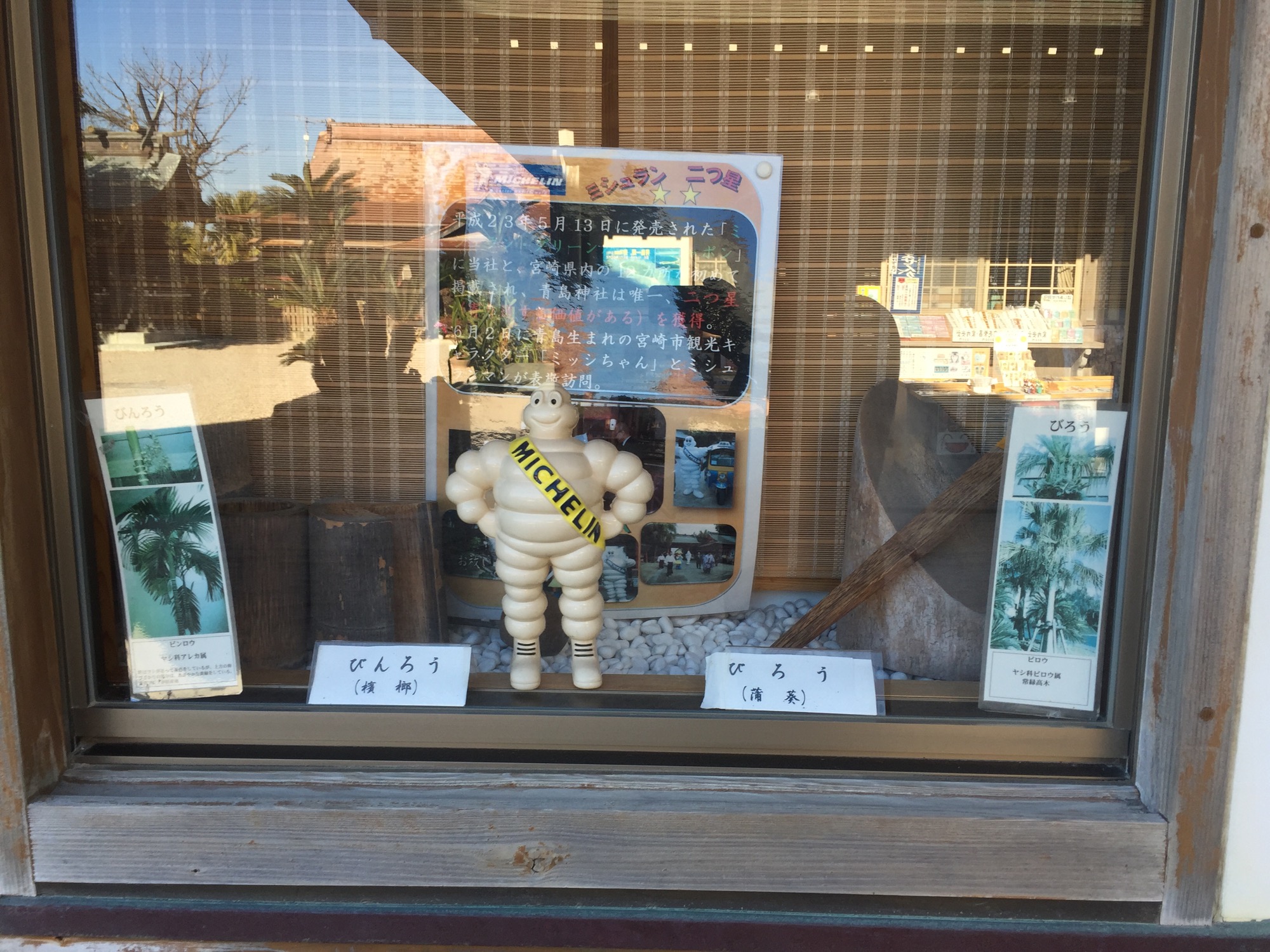
… as it turns out, Michelin gave this place two stars! For uh… I don’t know for what. Not for food, that’s for sure.
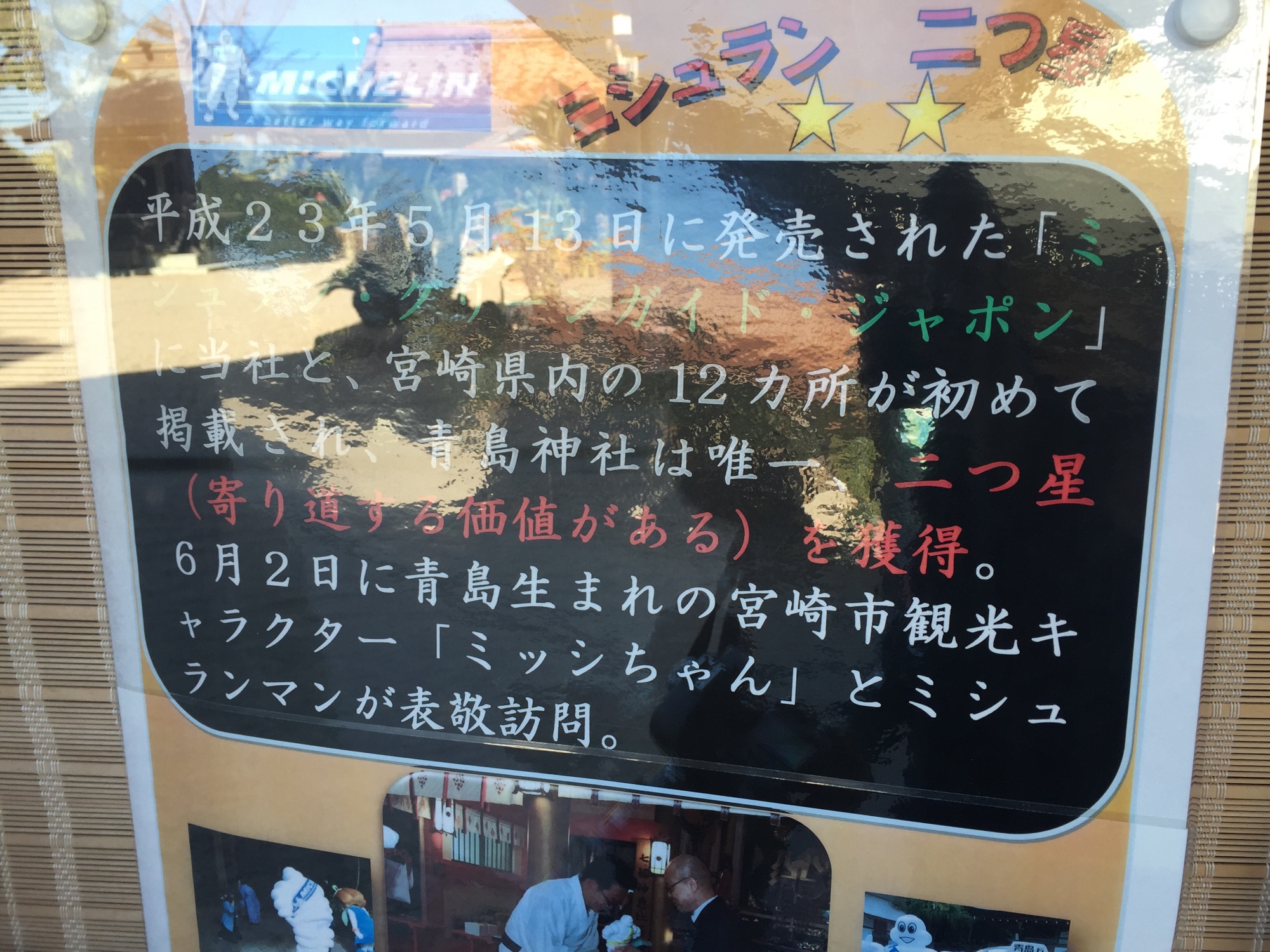
There was also a pretty botanical garden back on main land.
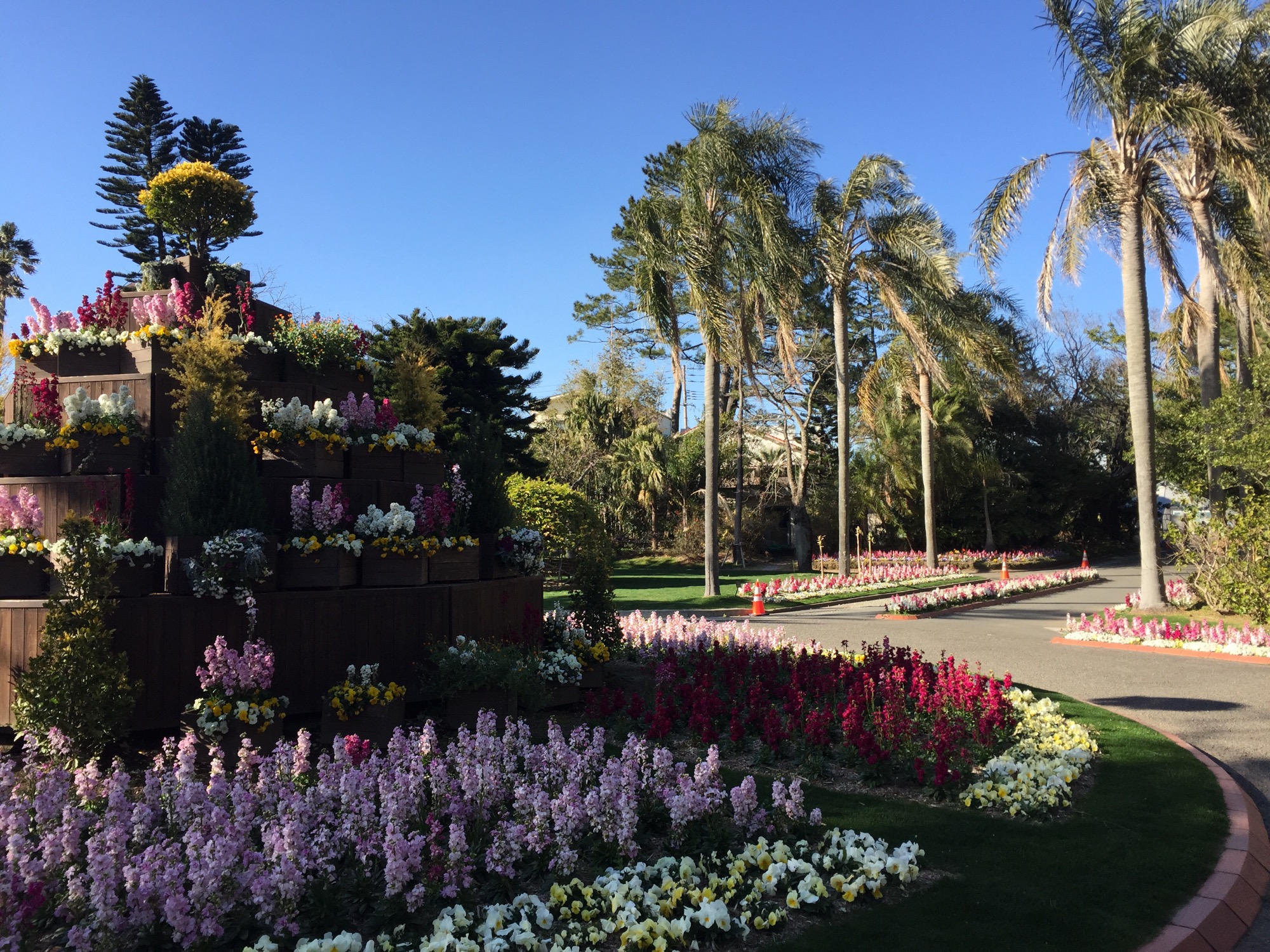
At this point, the day was coming to a close, so it was time to head to the hotel. I was staying at the Holiday Inn Resort in Miyazaki – there was some kind of an IHG promotion going on, and I needed a Holiday Inn Resort stay to complete it, so it was a good combo.
I got assigned a Japanese-style room, which is cool.
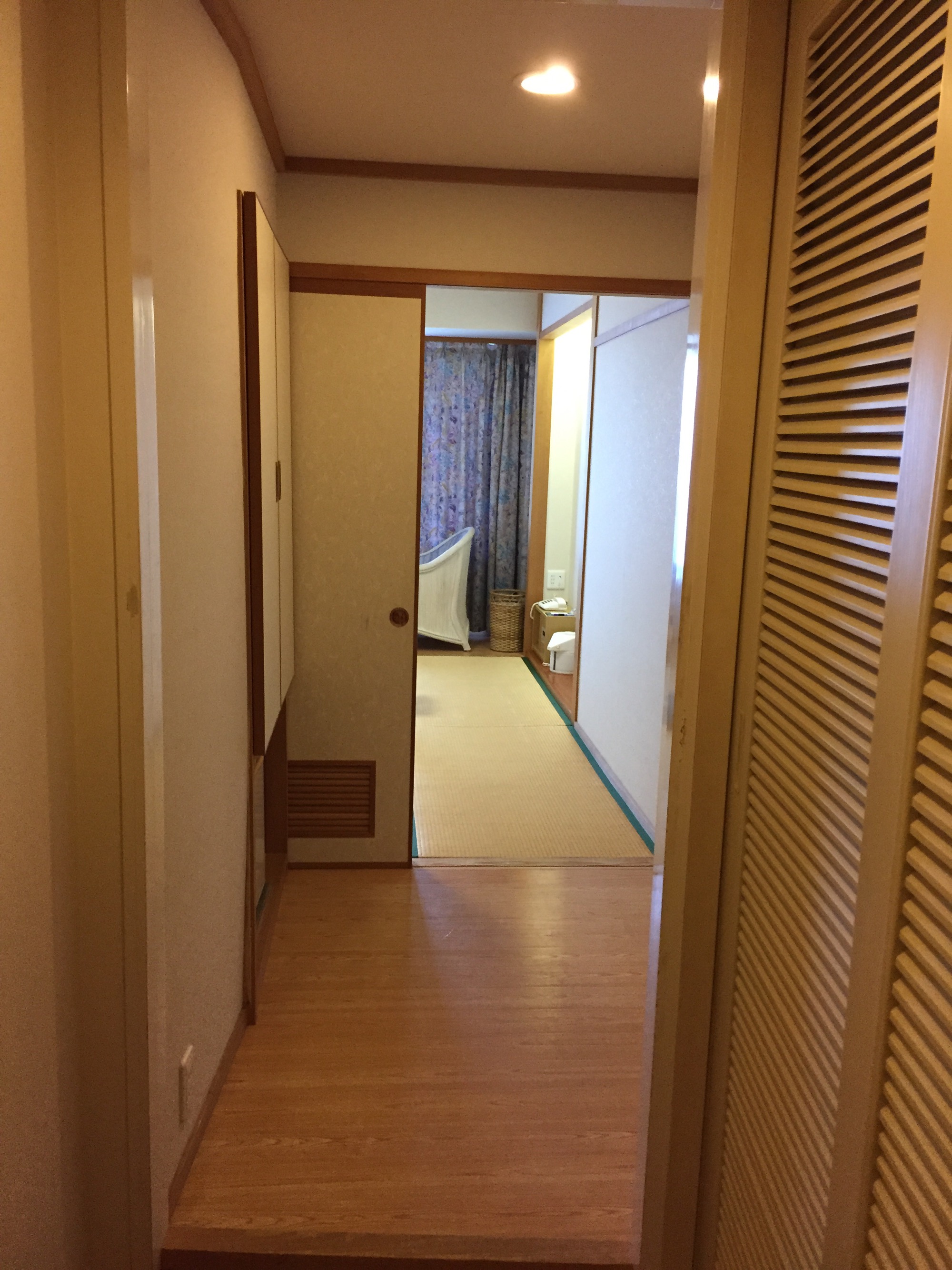

It had a really nice ocean view.
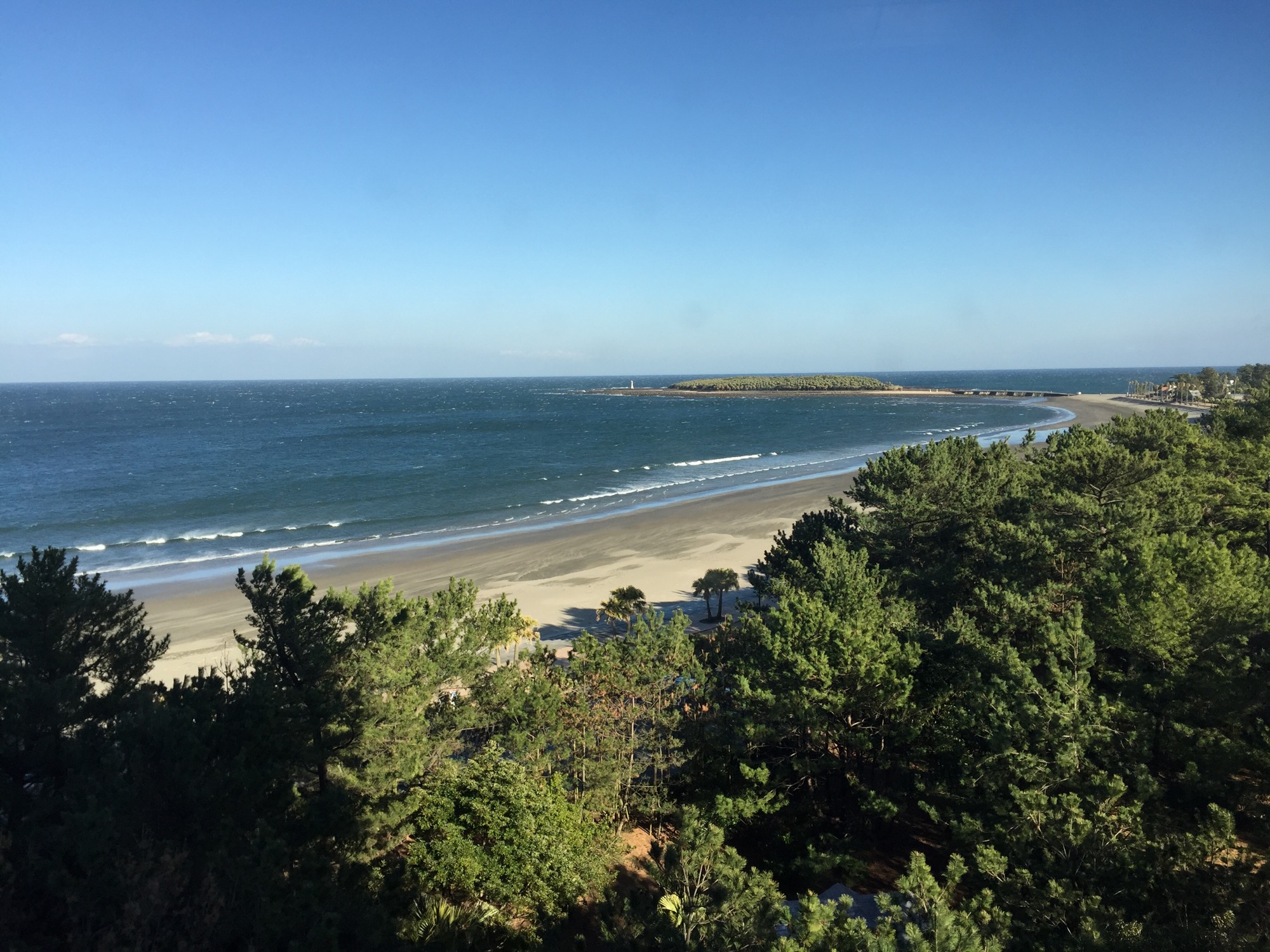
As a platinum diamond iridium unobtainium member, some candy was provided to appease me not getting a palanquin and a room for my kangaroo.
In the lobby, I saw a Japanese version of a Lorem Ipsum ad. A great shock to the whole world indeed! Read the ad. It’s well worth the read.
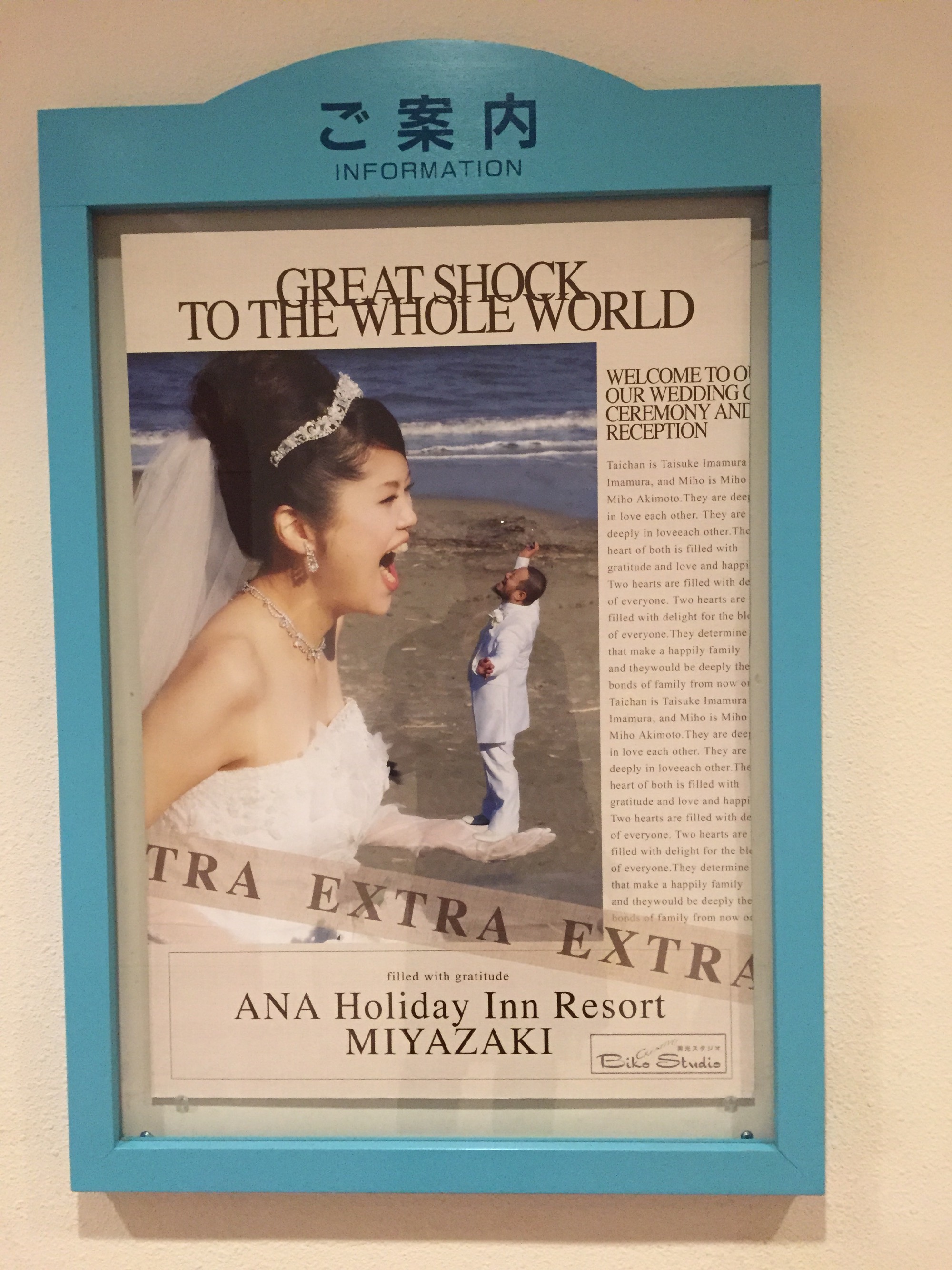
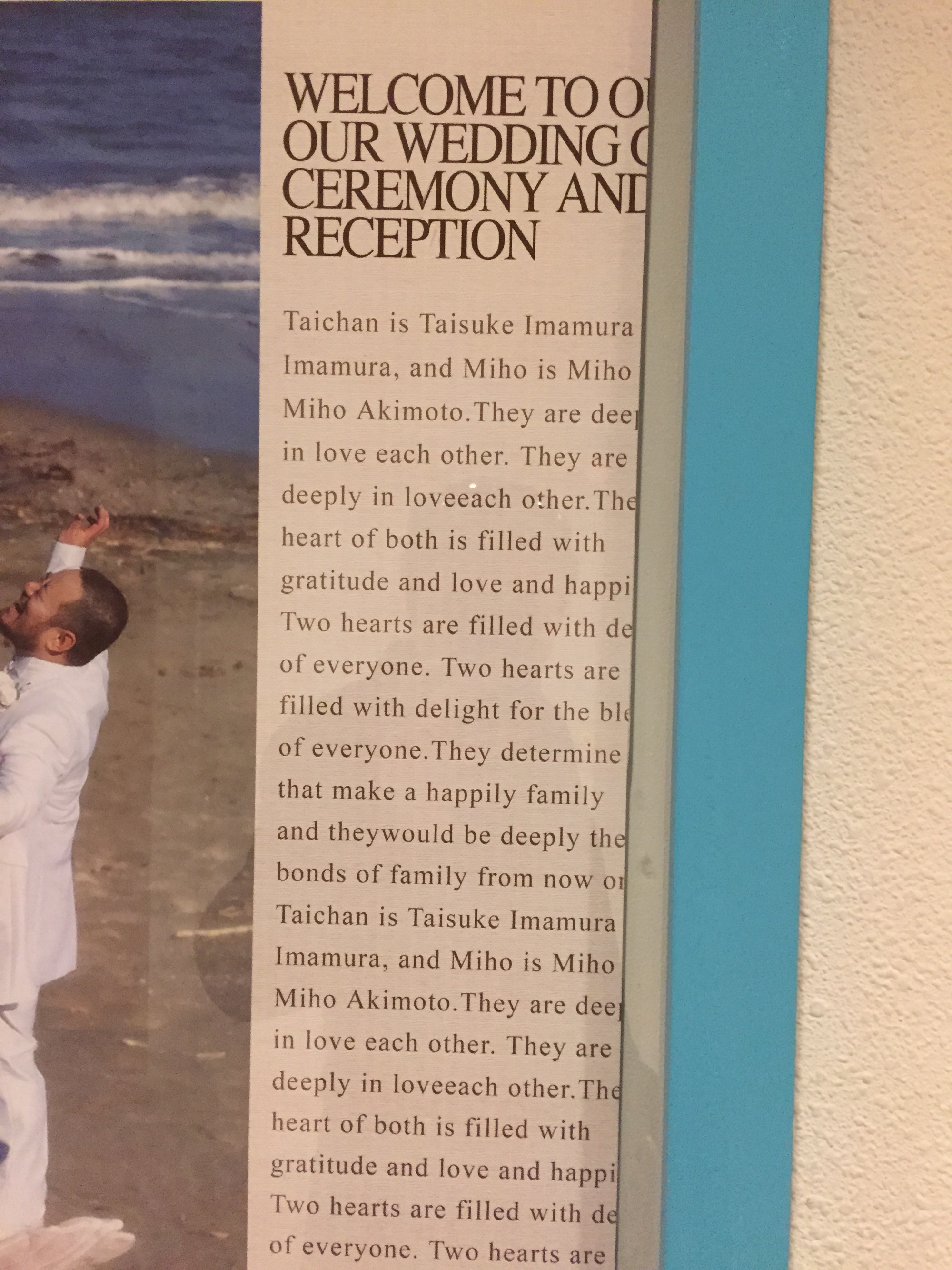
The Yomiuri Giants were visiting, so a bunch of people were lined up for autographs.
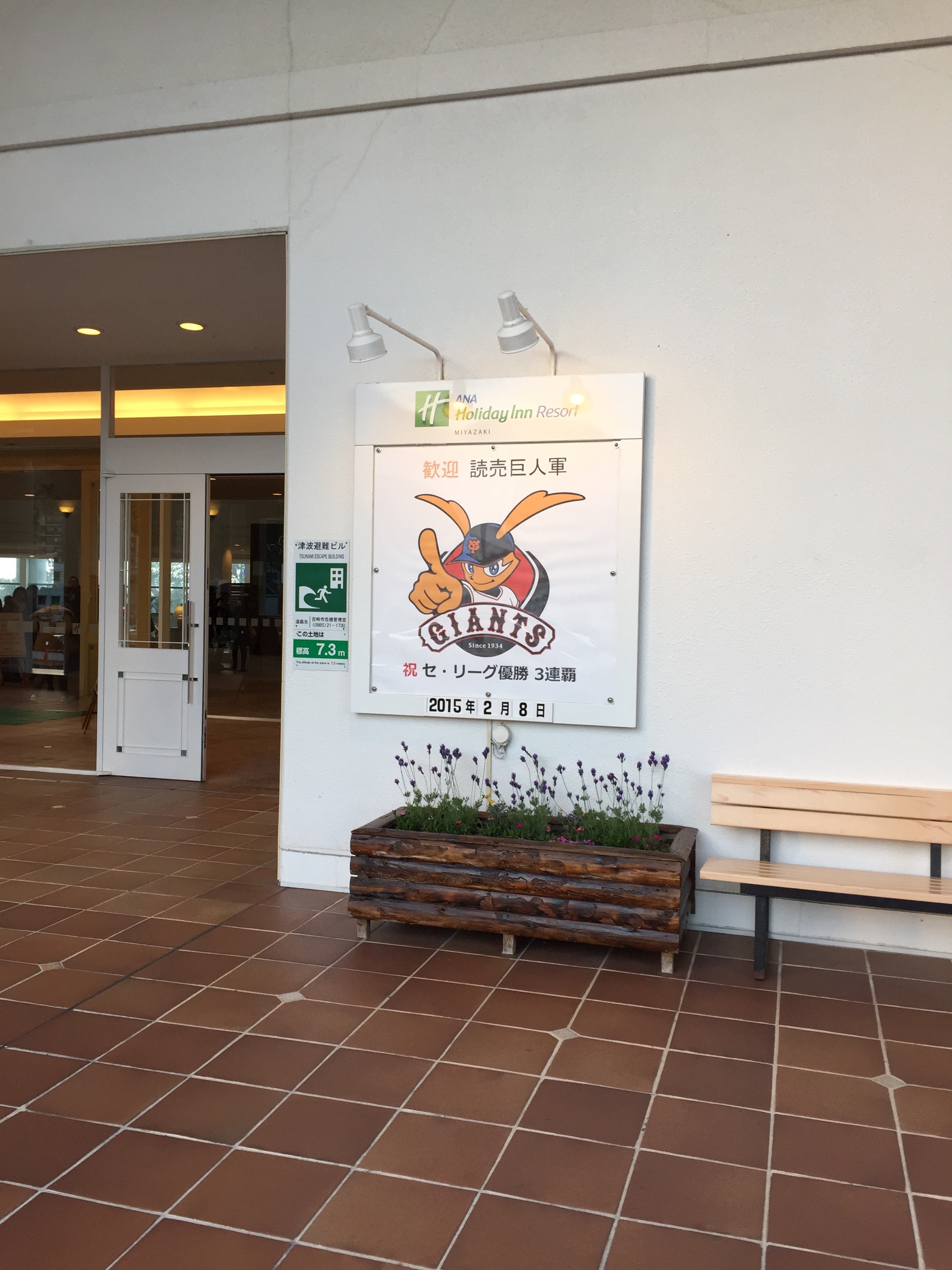
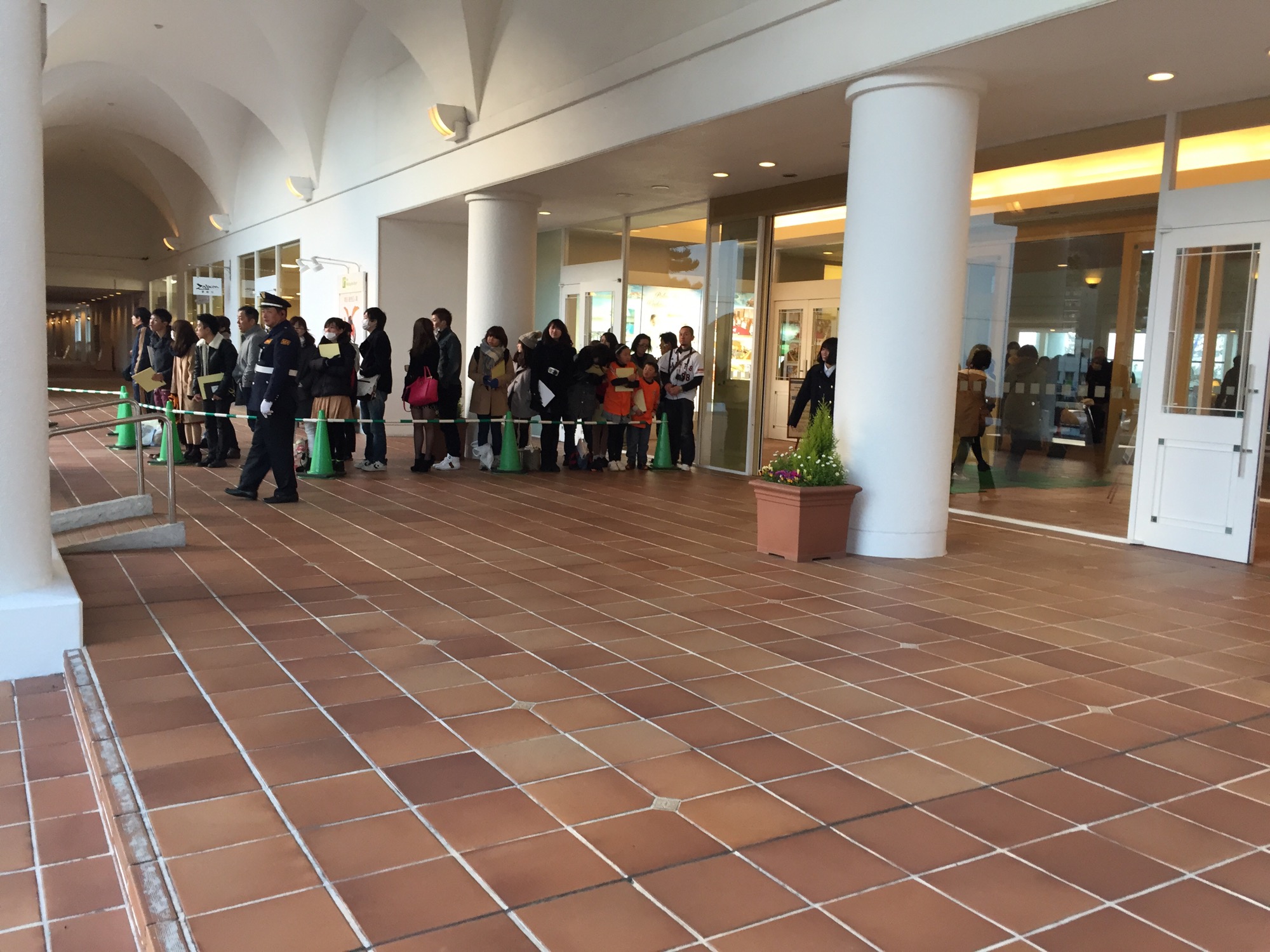
I didn’t want to deal with the crowds, so I went out for dinner. The restaurant I went to was recommended by local reviews, and it was pretty hard to find (and clearly not marked very well, either). This place generated a story that illustrated well my experience in Japan, though.

The place was small – basically a counter and a few tables.
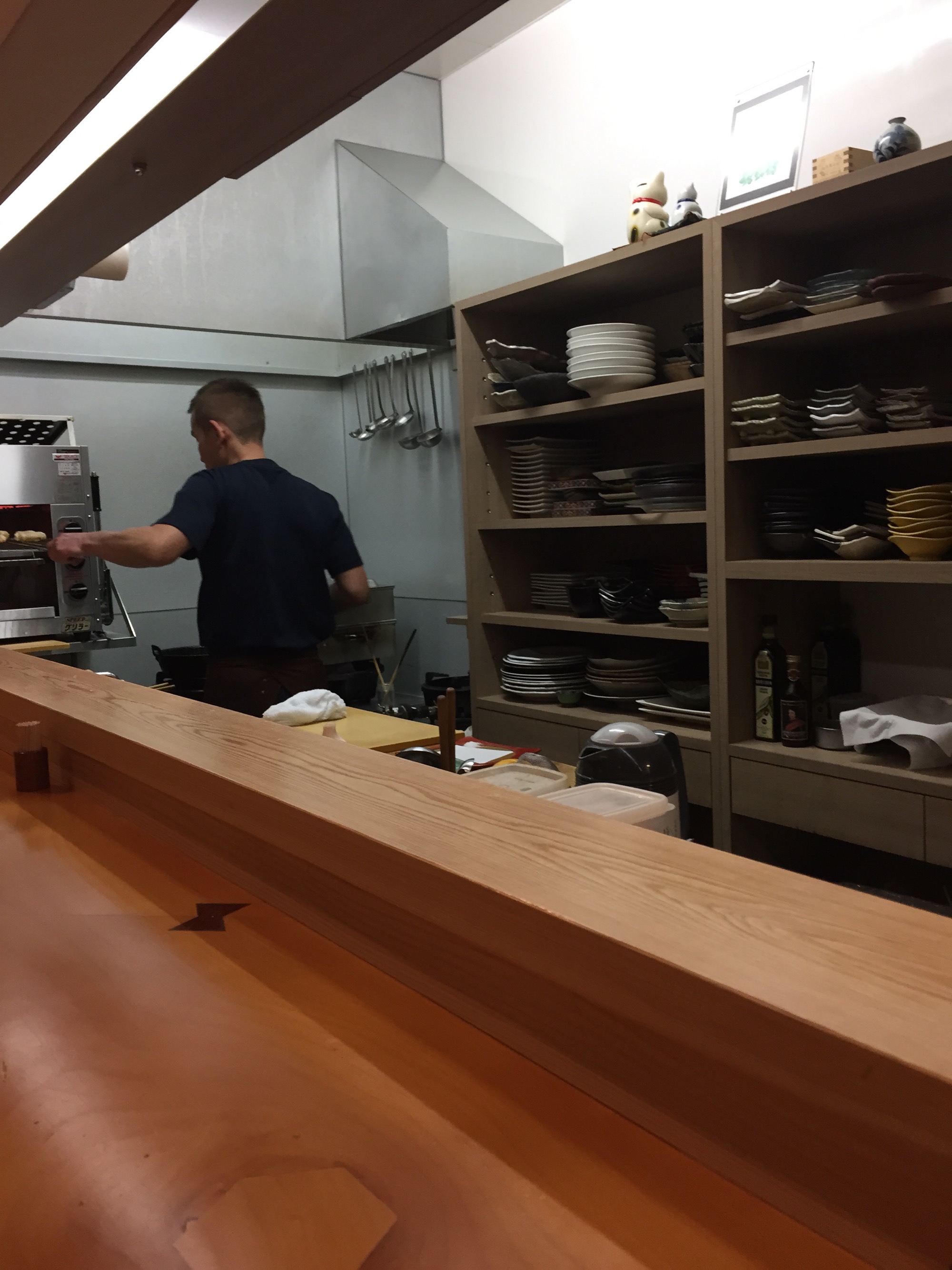
I sat down and was handed a menu.
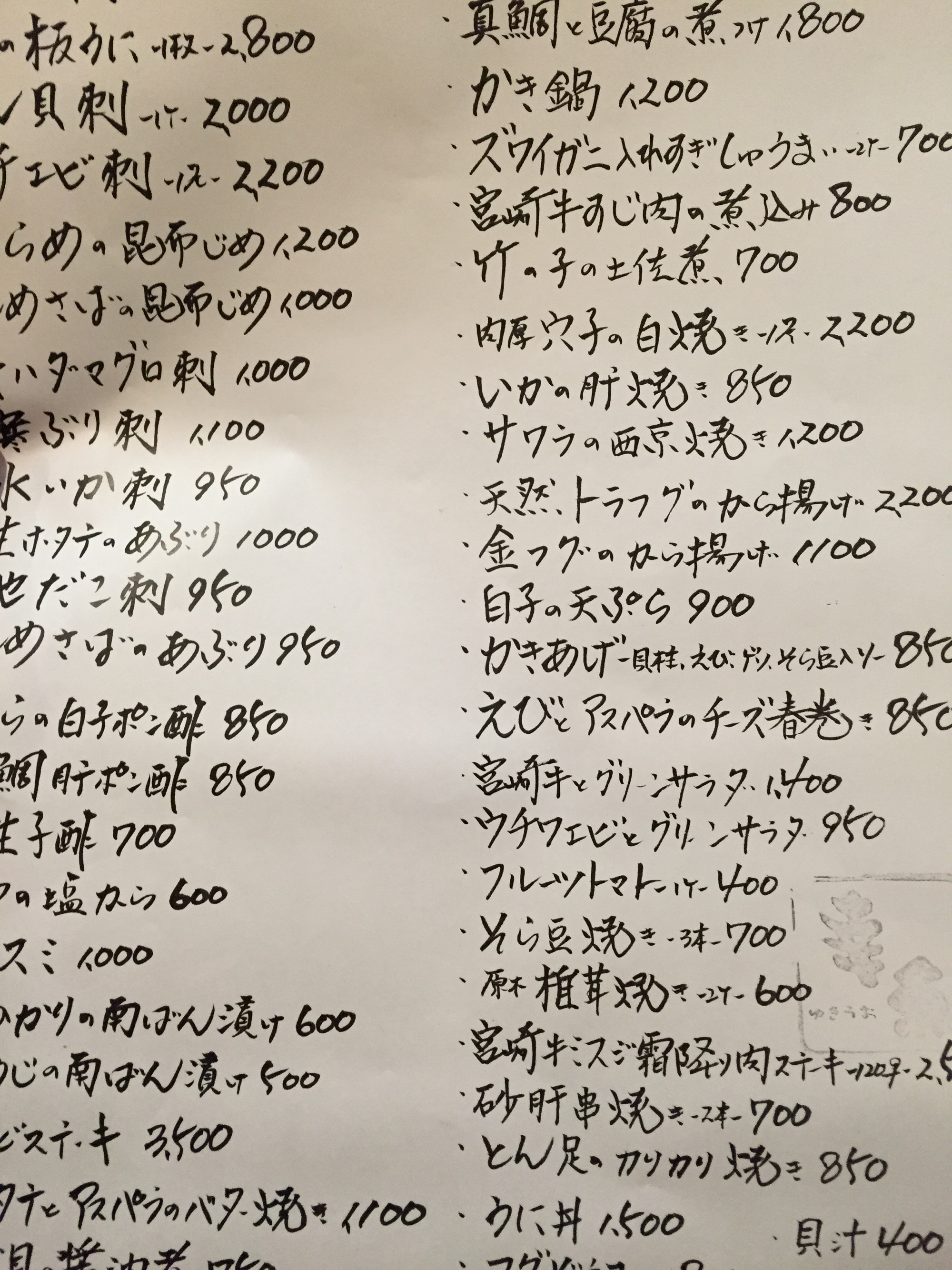
Full stop. I have some degree of confidence in my Japanese, but reading it is different from speaking it, and reading THIS is very different from reading emails that are helpfully aided by the usually-crooked-and-often-giving-the-opposite-translation-but-still-better-than-this Google Translate. When I looked at this menu, I realised I had a very immediate problem: I had no idea what was on the menu. I can read some bits of it, but certainly not enough to construct a dinner out of it.
Of course, I am a well-travelled individual with a quick mind and dry wit, so I can bail myself out of any tough situation I fall into. No challenge is too great a challenge. “Good sir,” I summon the chef. “Menus, they are for the peasants. I am a firm believer in your skill as a famous chef. I shall have that which you feel is most edible on this fine February evening.”
The man looked at me with some concern as to my sanity, and replied, “I’m sorry sir, you’ll have to pick from the menu.”
“From the menu?!” I ask. “But I want your recommendation … for today! Today recommendation! Give me fish!”
“Sir, since I don’t know you, I don’t know your preferences and so I can’t fathom what you’d like to eat, so I can’t recommend you anything. Please pick from the menu.”
Japanese intransigence rears its head once again. My plan was foiled, and I had to read those scribbles. I managed to decypher “tuna” somewhere in that menu, and “fried” something, so I just pointed fingers and demanded to be fed. This became a story for when I go to restaurants with people in Japan and they ask me what I want to eat, and I always tell them, “I let you choose”, and follow it up with a story of how I can’t be bothered to read the menus.
First, some mussels showed up. Not sure which of my fingers pointed at this one, but sure as hell wasn’t one I had any conscious control over.
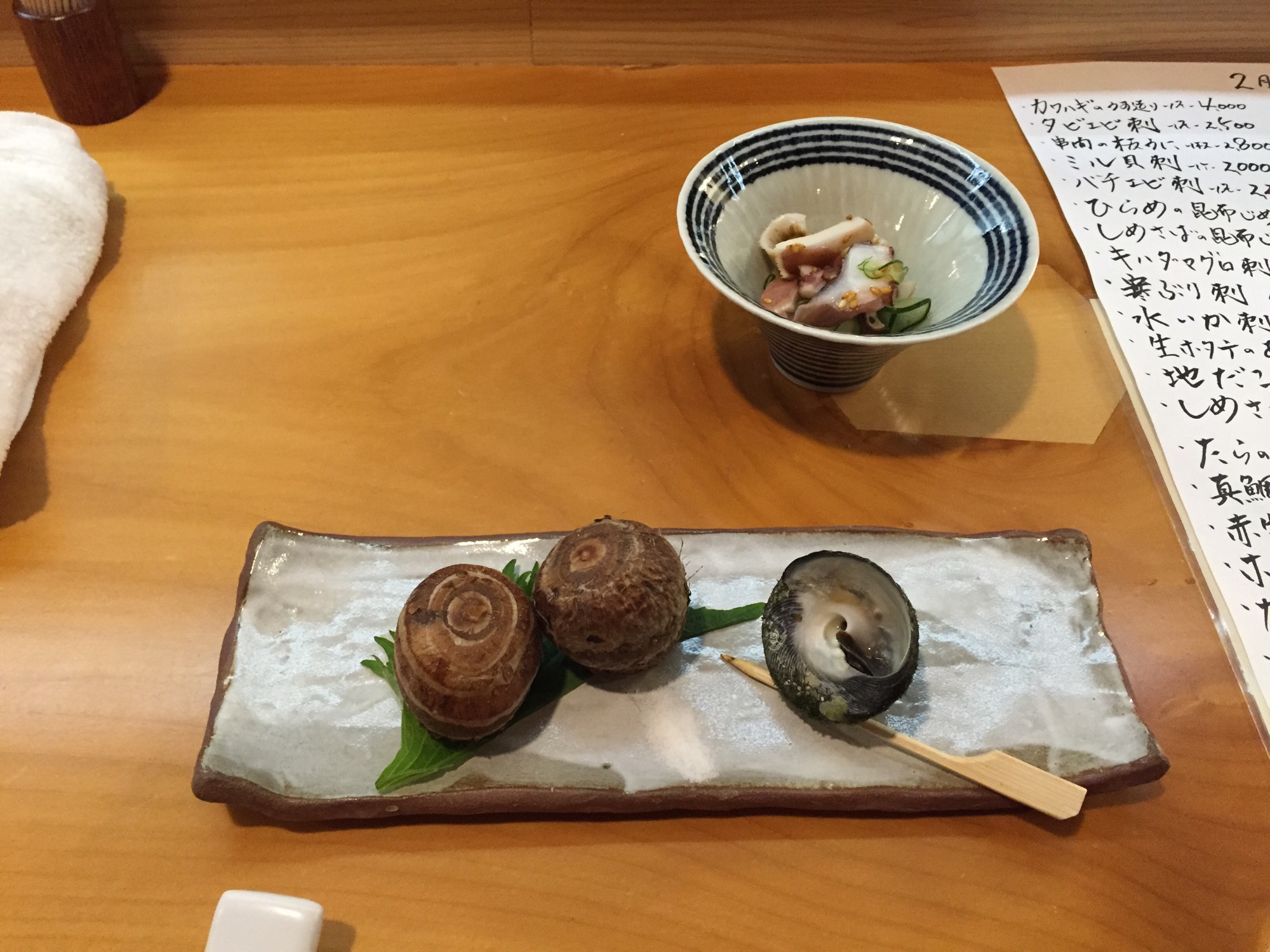
Some sashimi came. This was good.
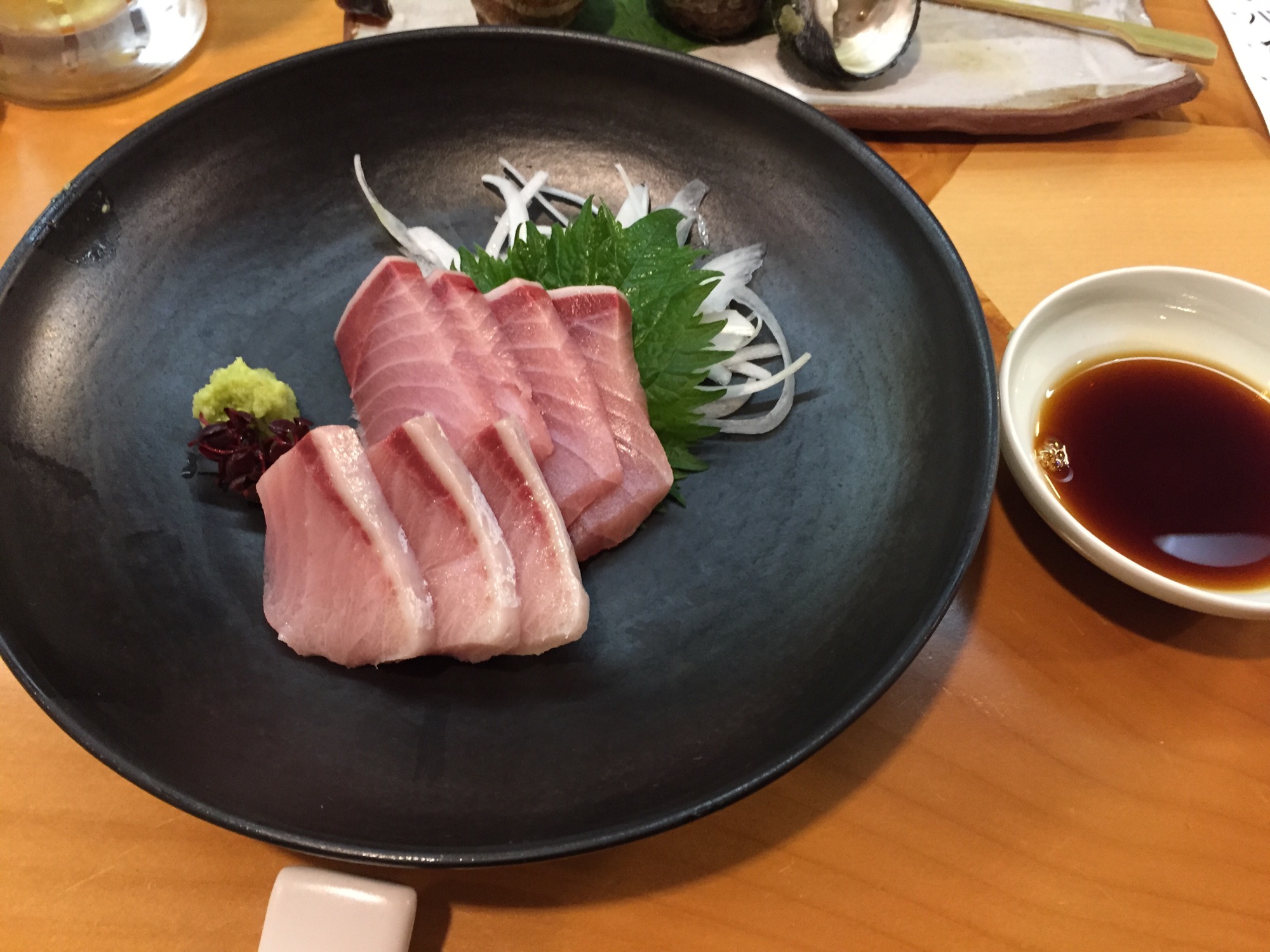
Fried oysters. Ah! So this was the “fried something” part. Nobody eats raw oysters in Japan.
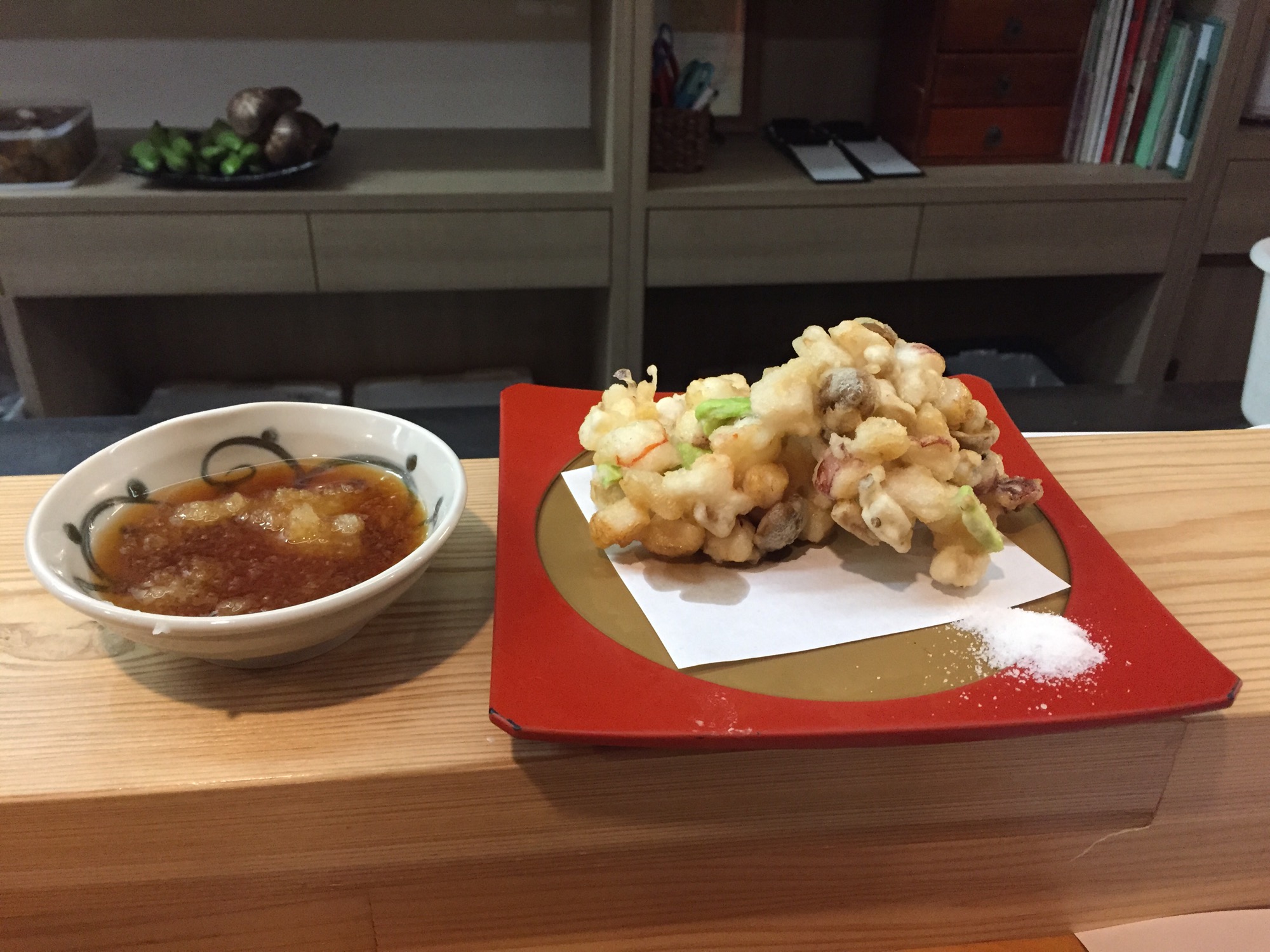
Tuna! I remember pointing at this.
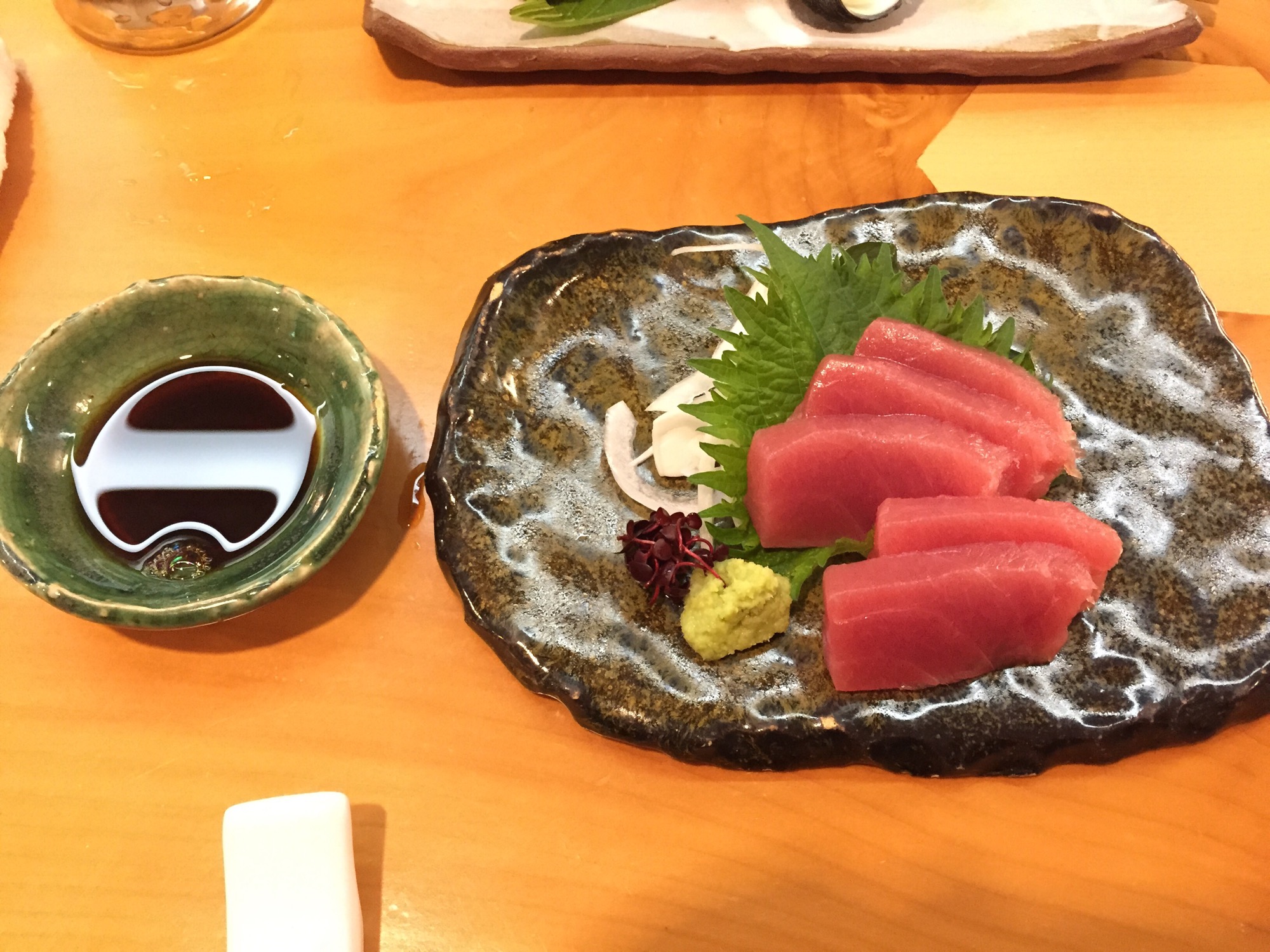
Looks like one finger pointed at meat. In a fish restaurant. I’m sure the chef loved this.

In all seriousness, the food was amazing. Well worth the trip. Maybe need some preparation ahead of time with regards to the menu, but hey.
After dinner, I went back to the hotel, watched some variety TV (don’t ask me what’s happening… the only answer is “Japanese variety shows”)…
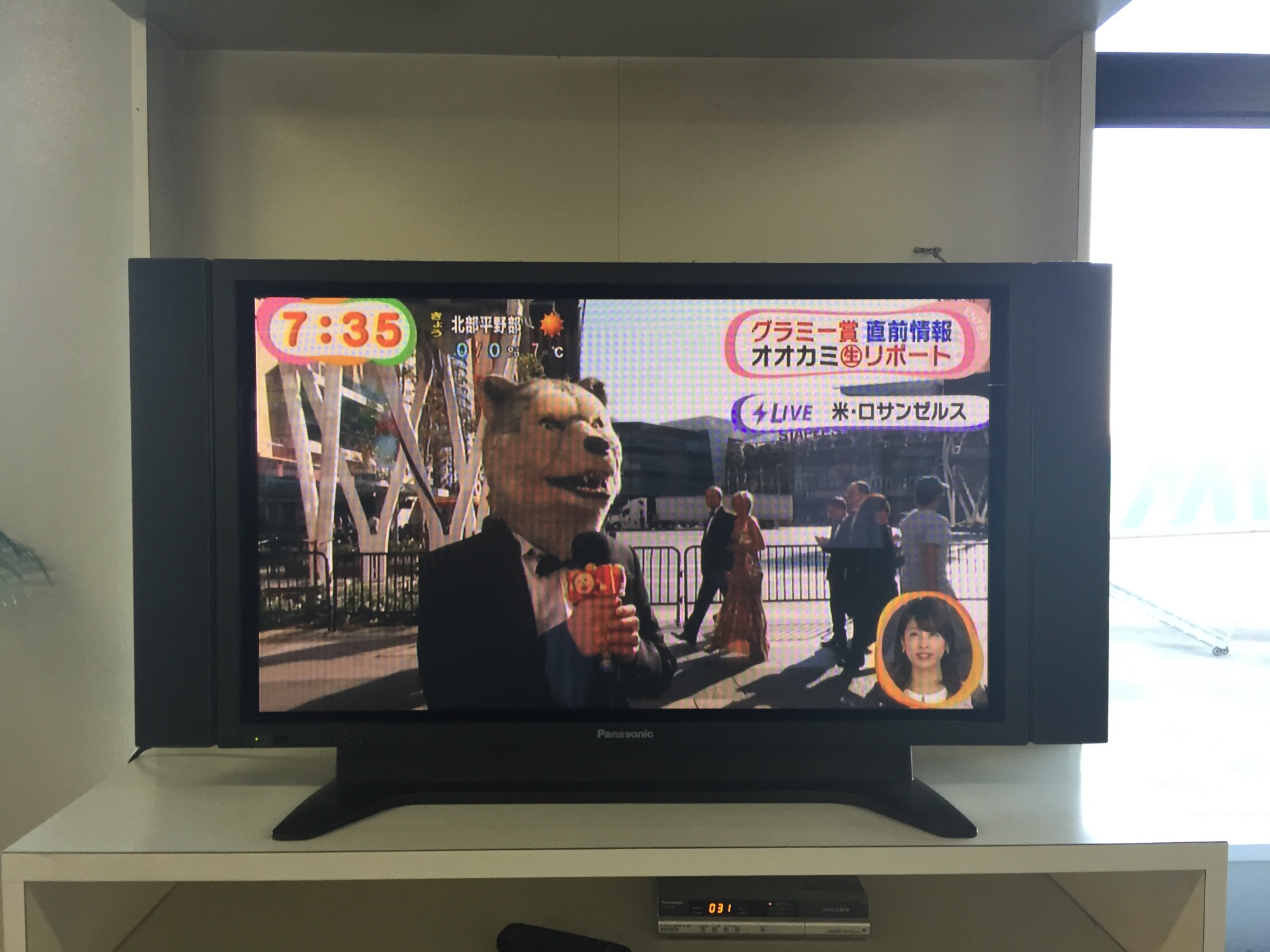
… and then I went off to my futon to sleep.

Fun trip, and I got to see Moai statues. Woohoo! Now I have to make it to the real Easter Island to compare.

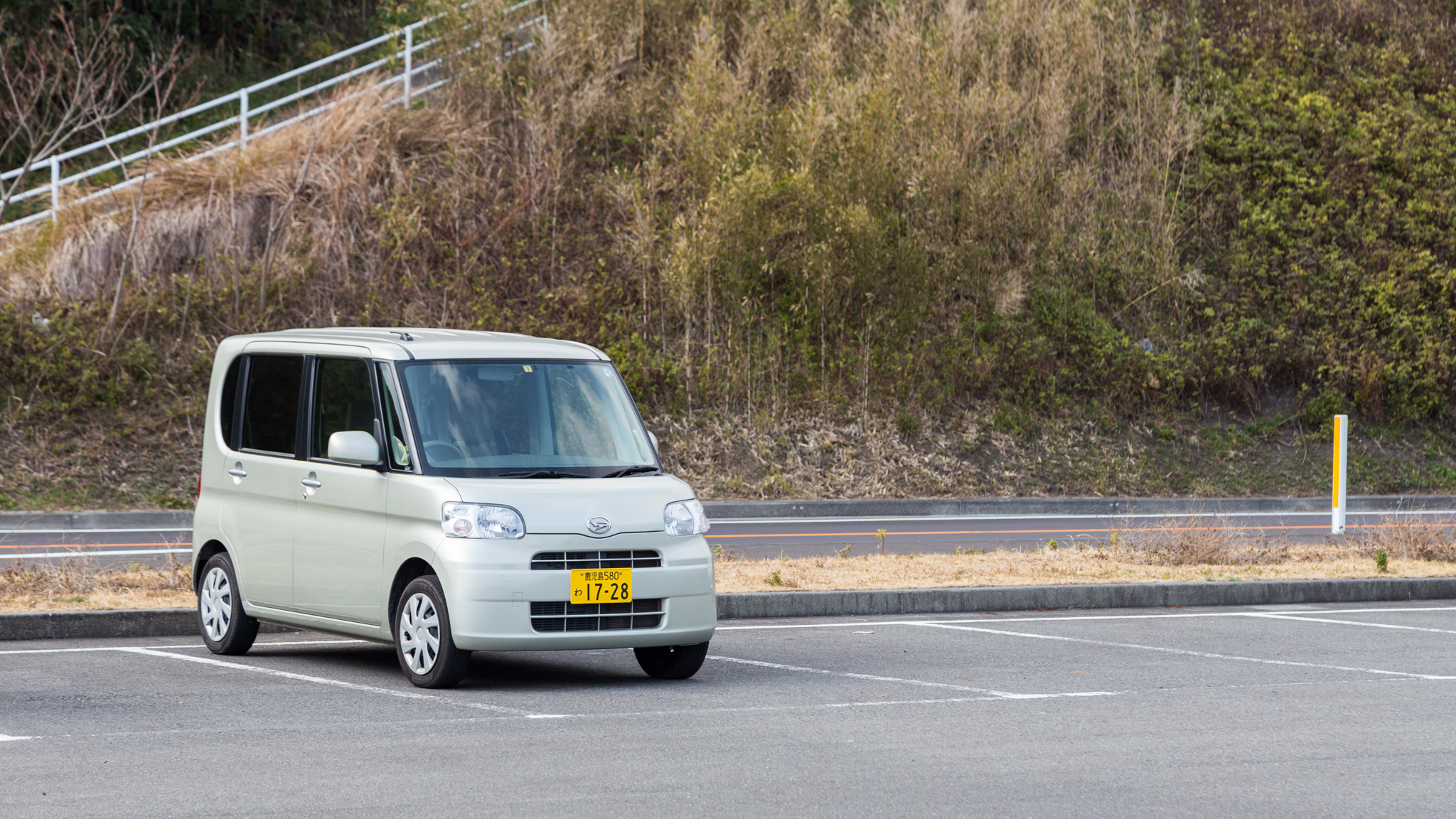

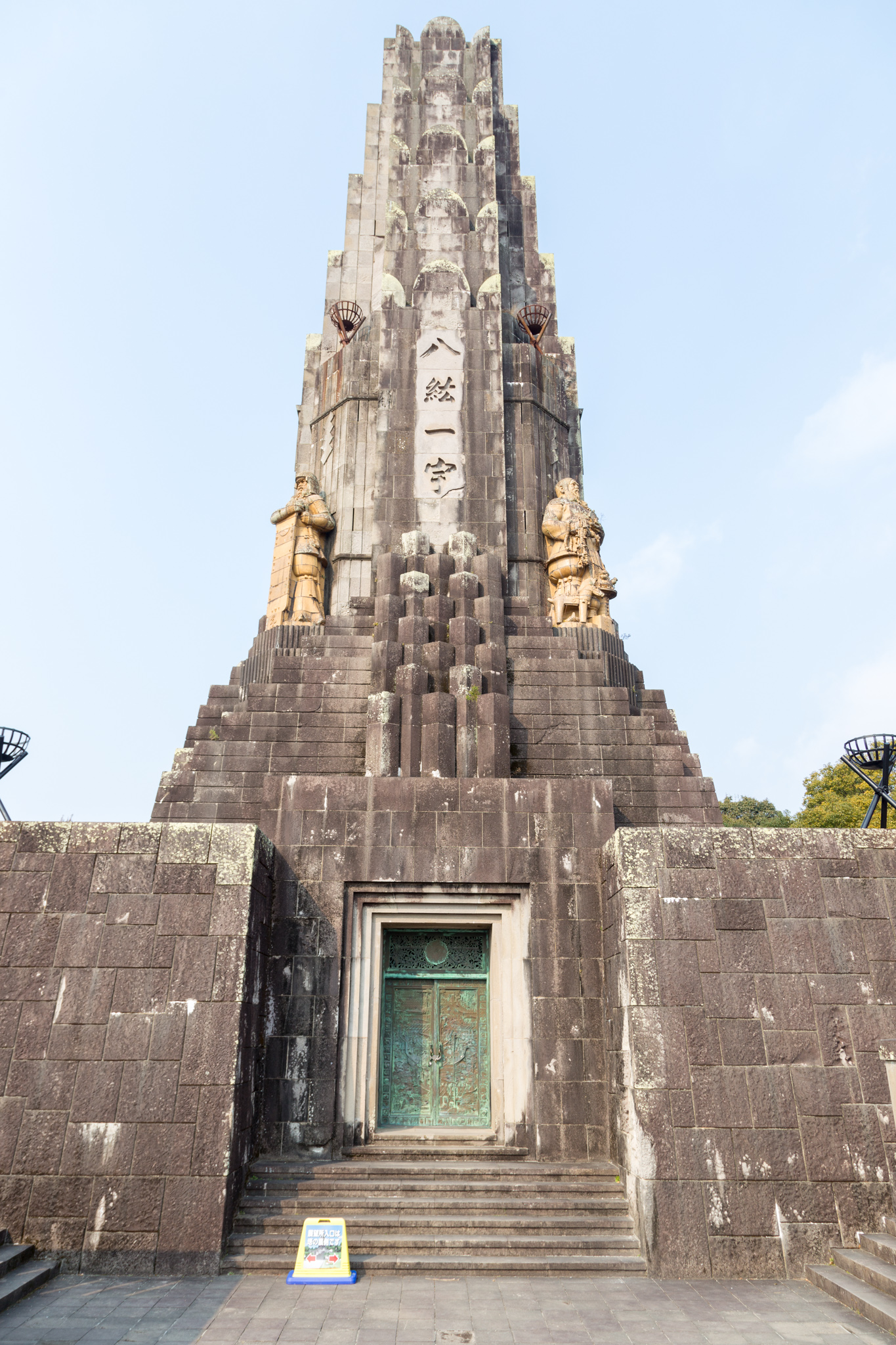

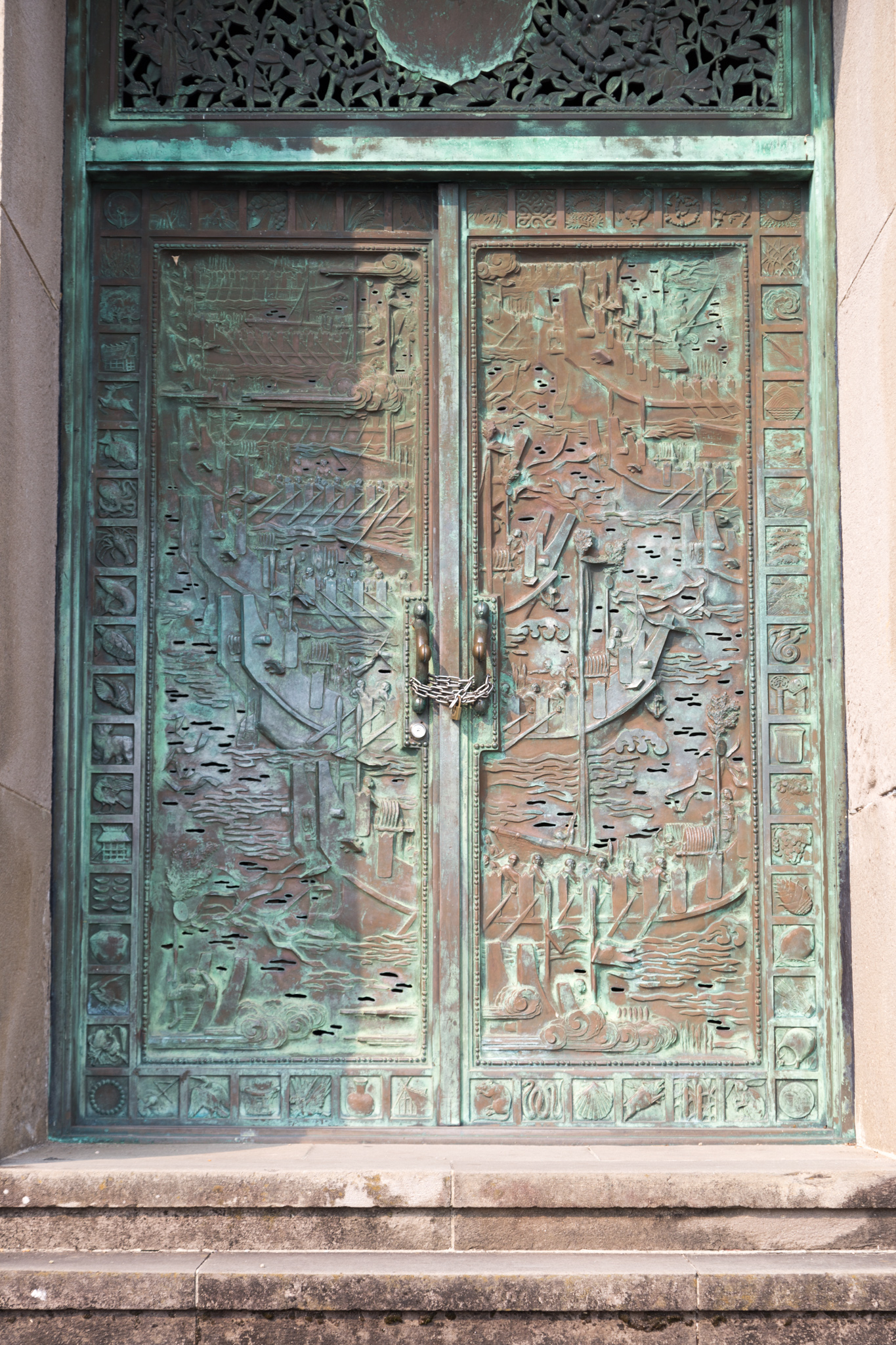
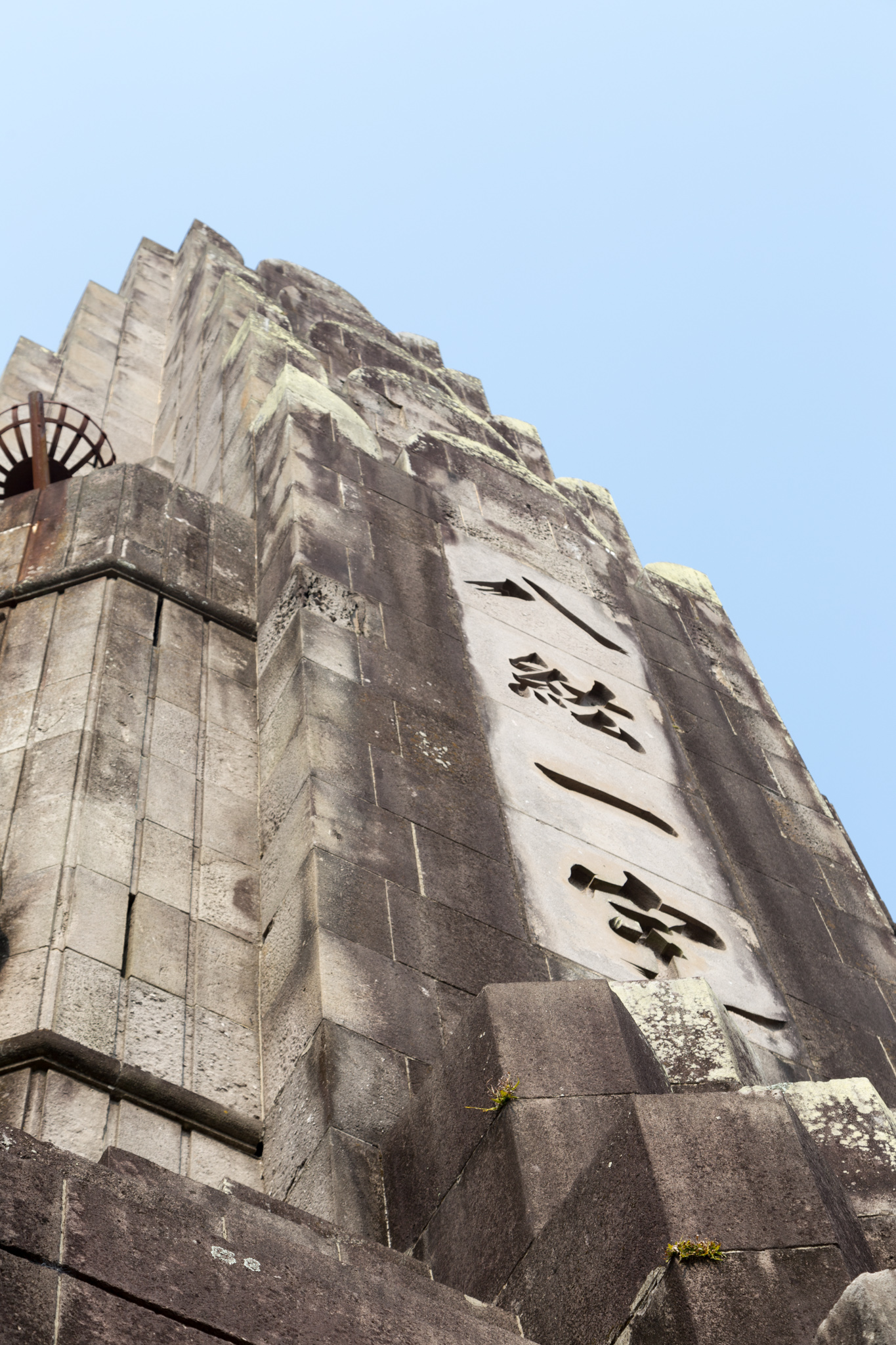
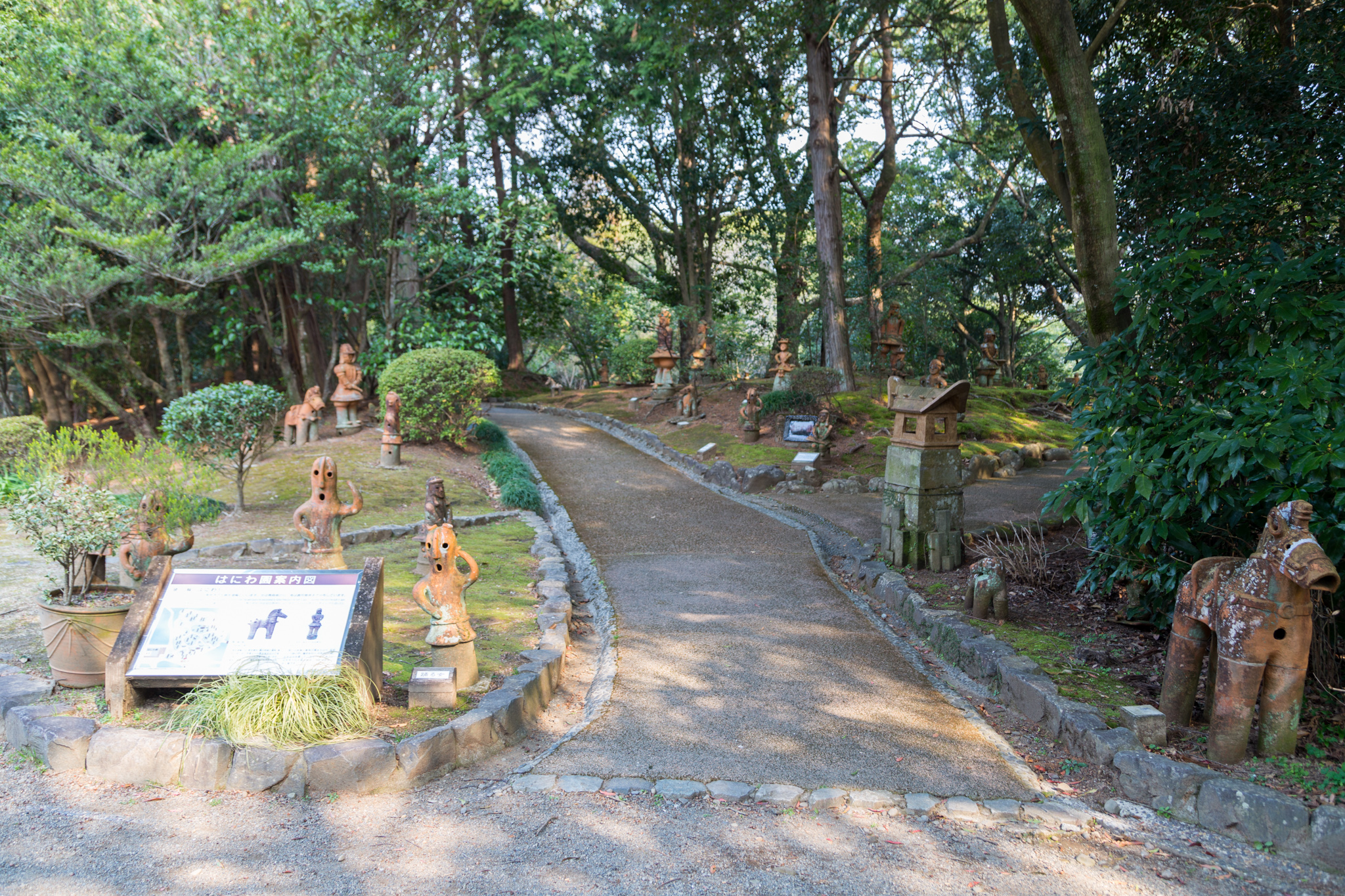
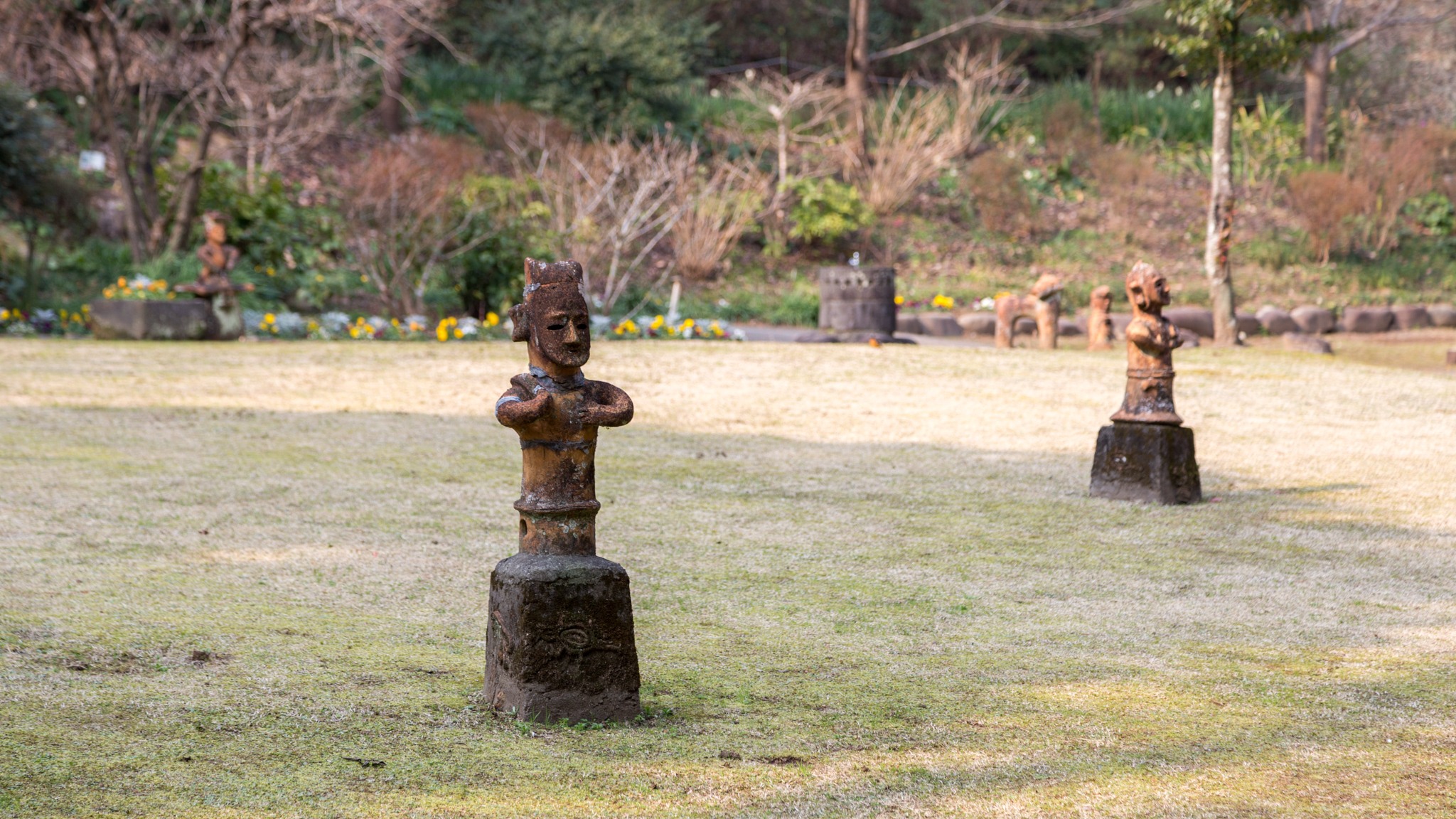


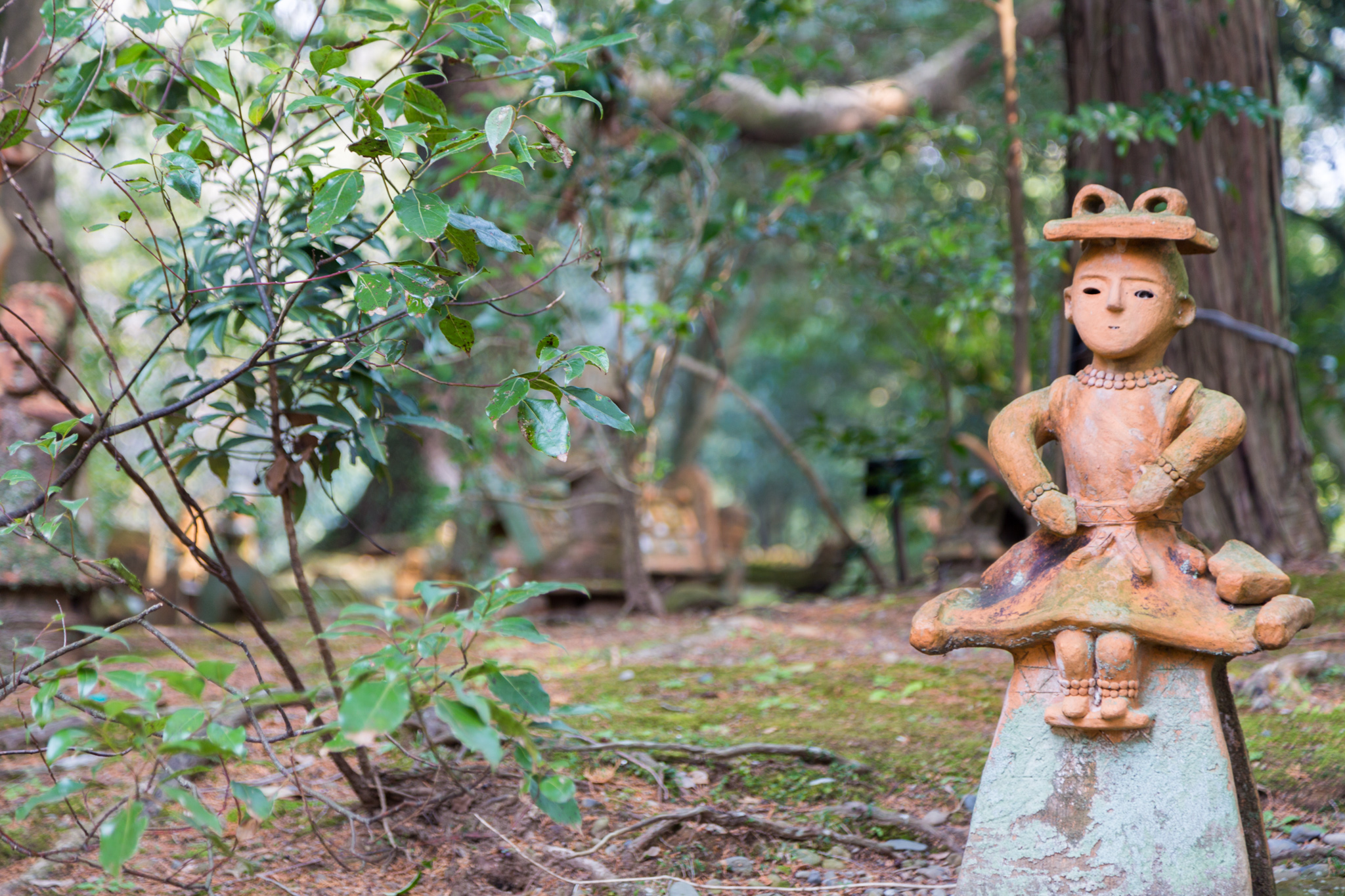
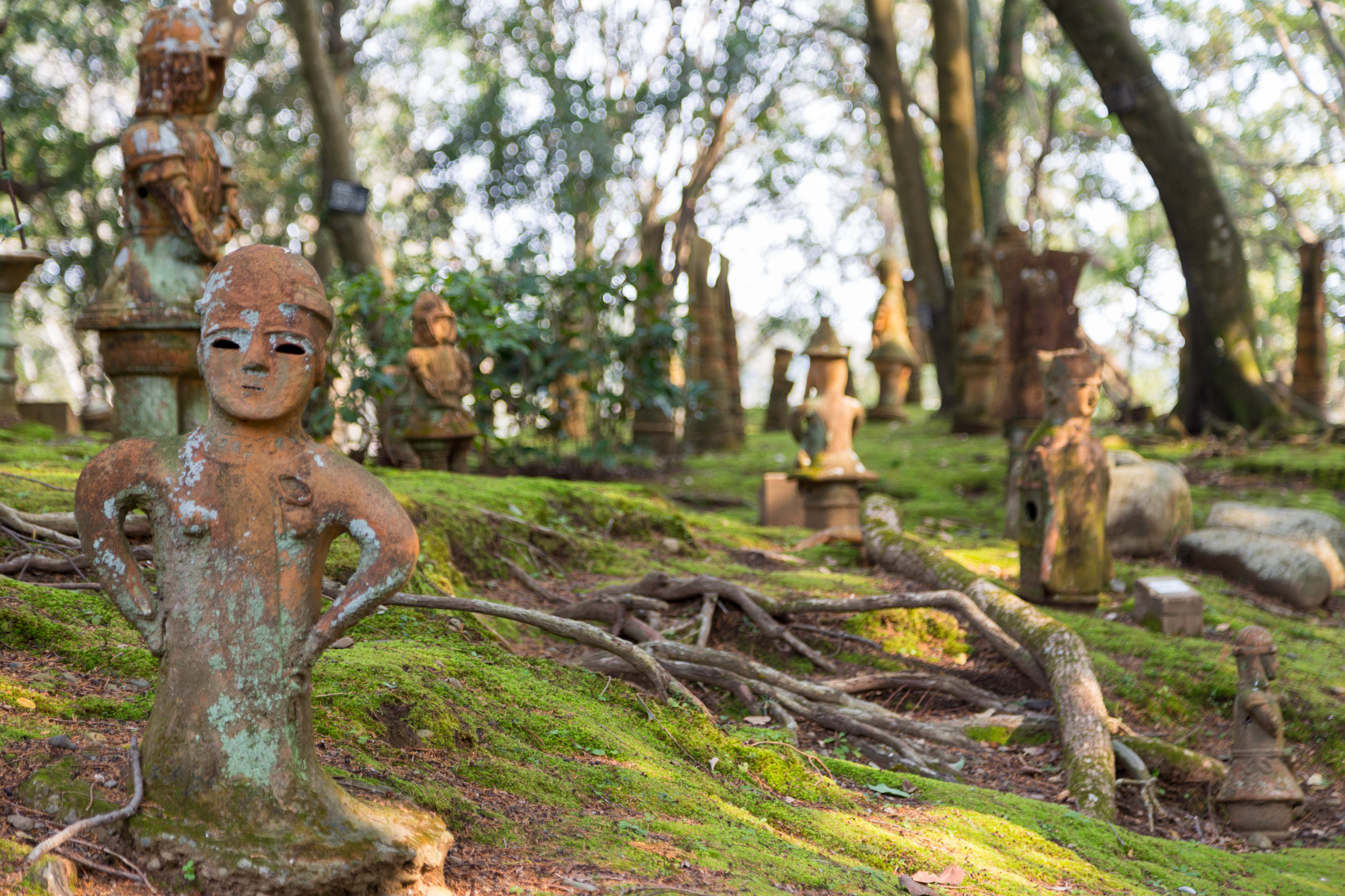
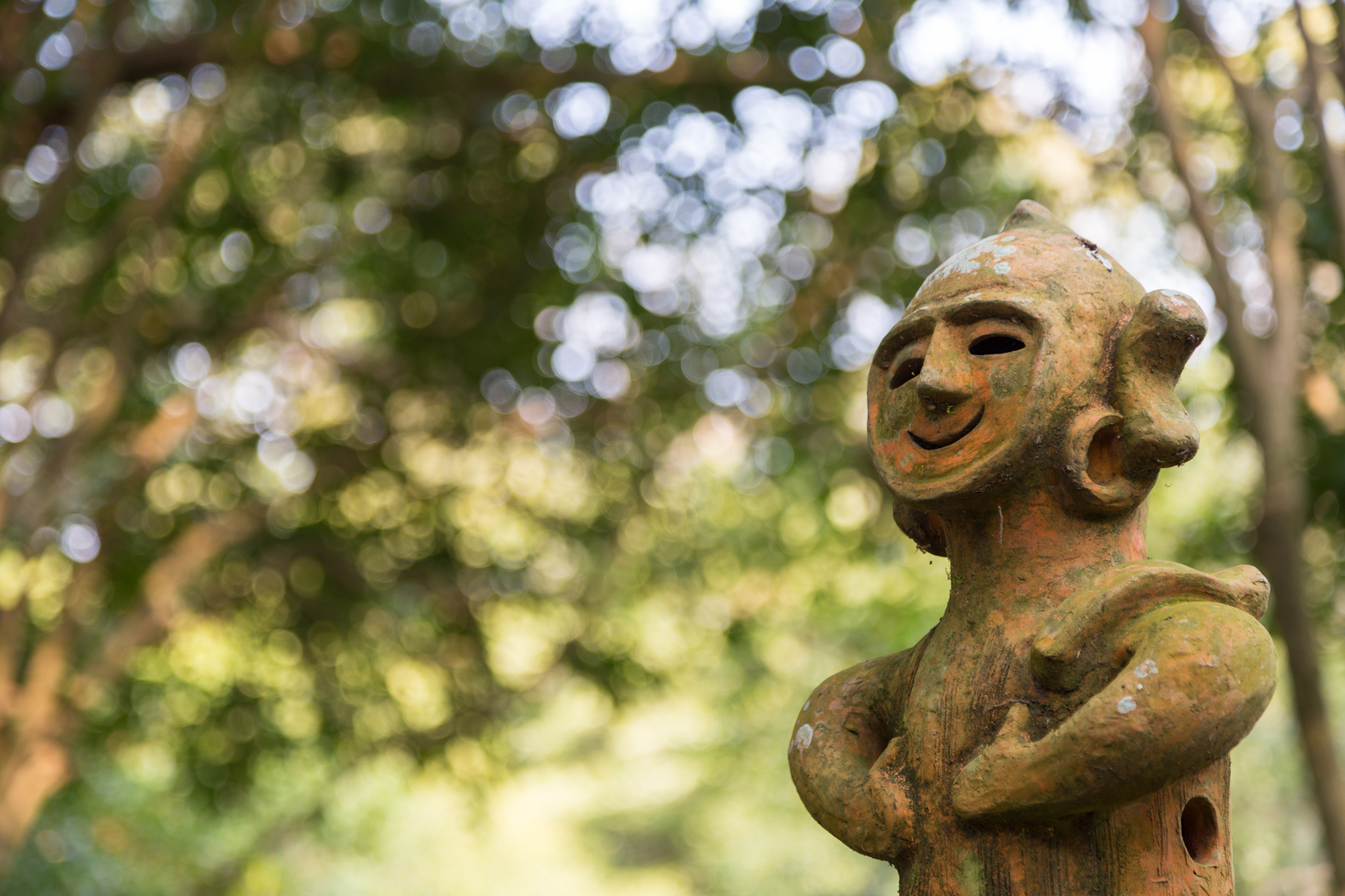





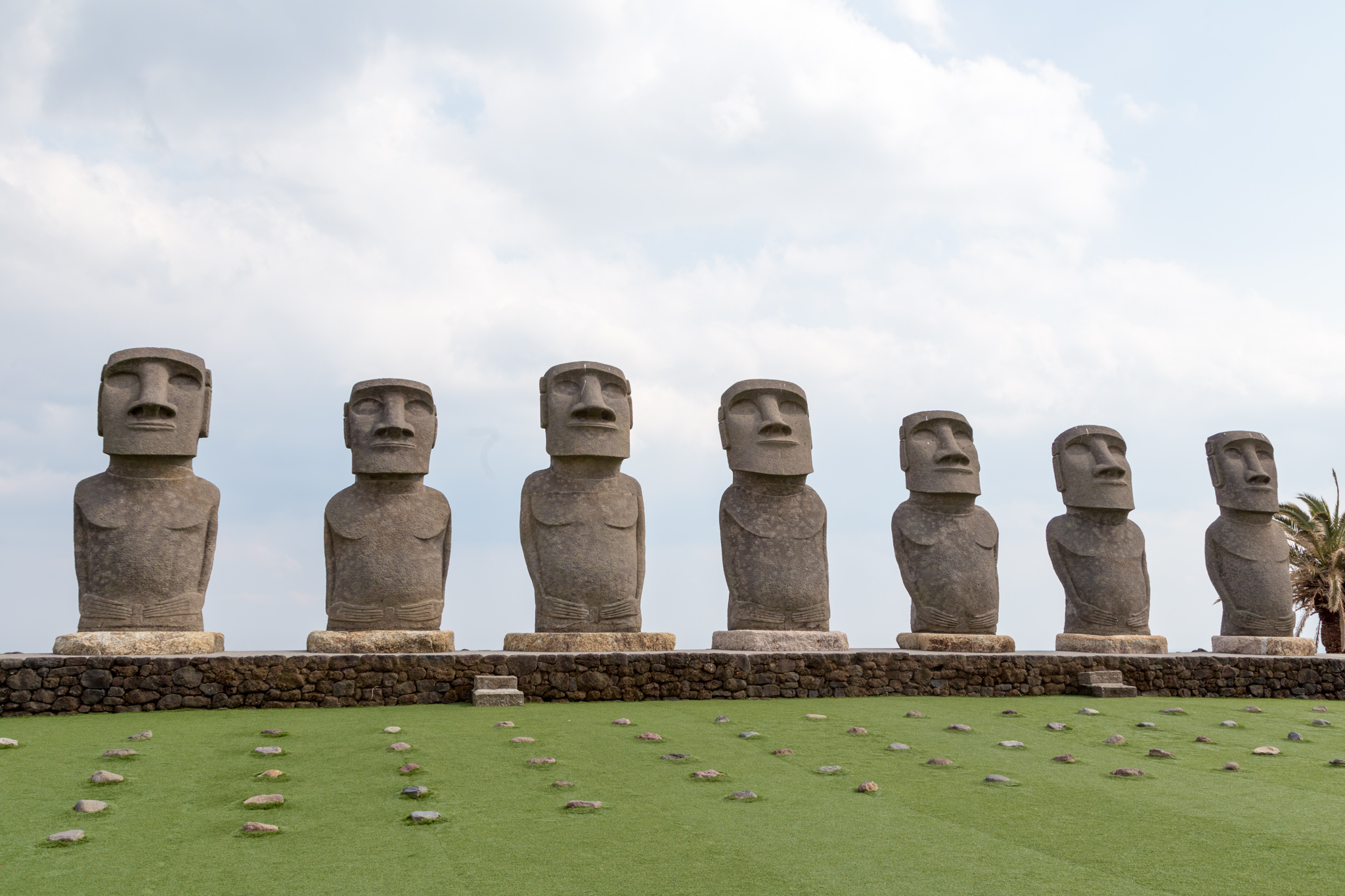


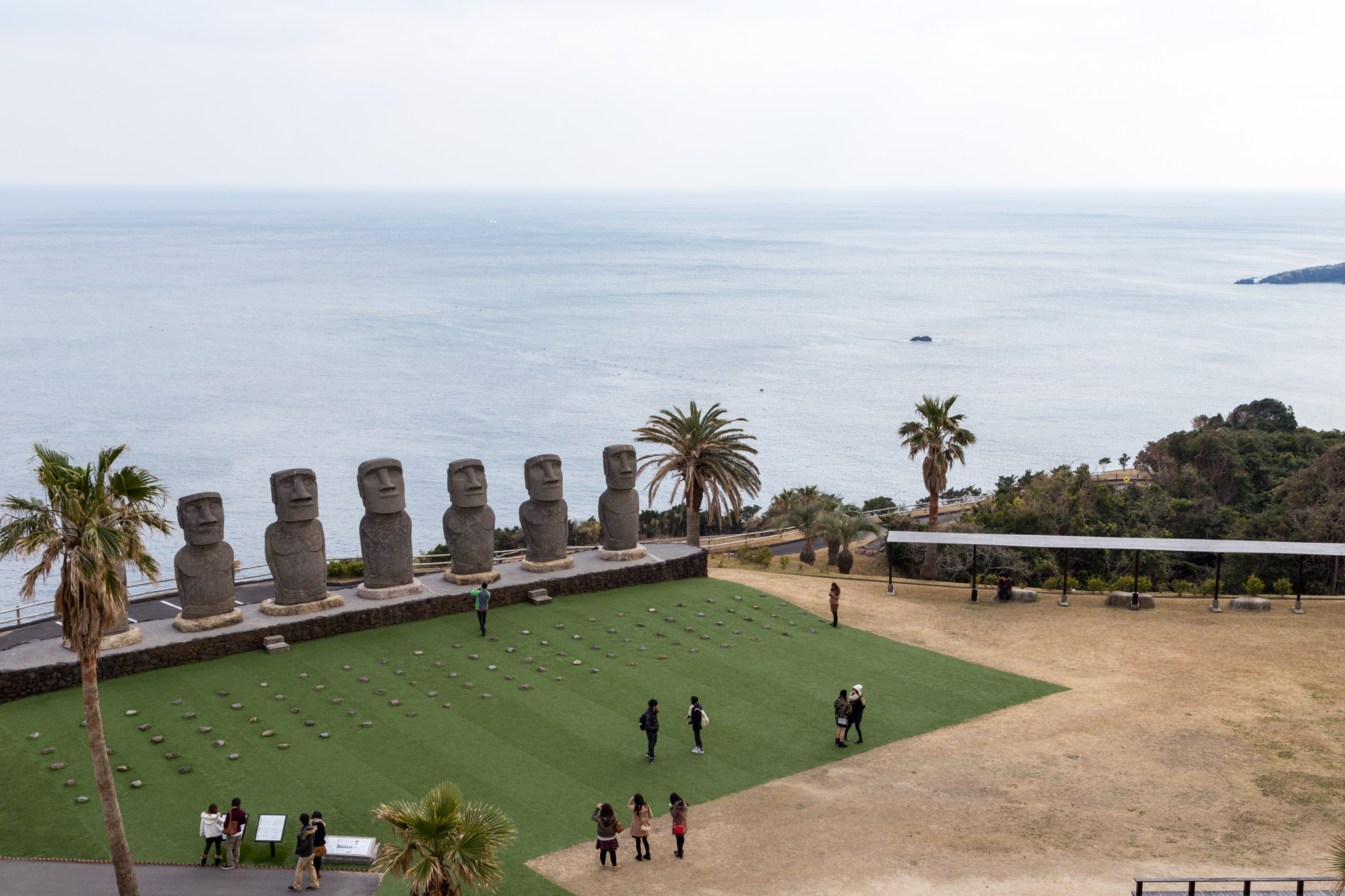
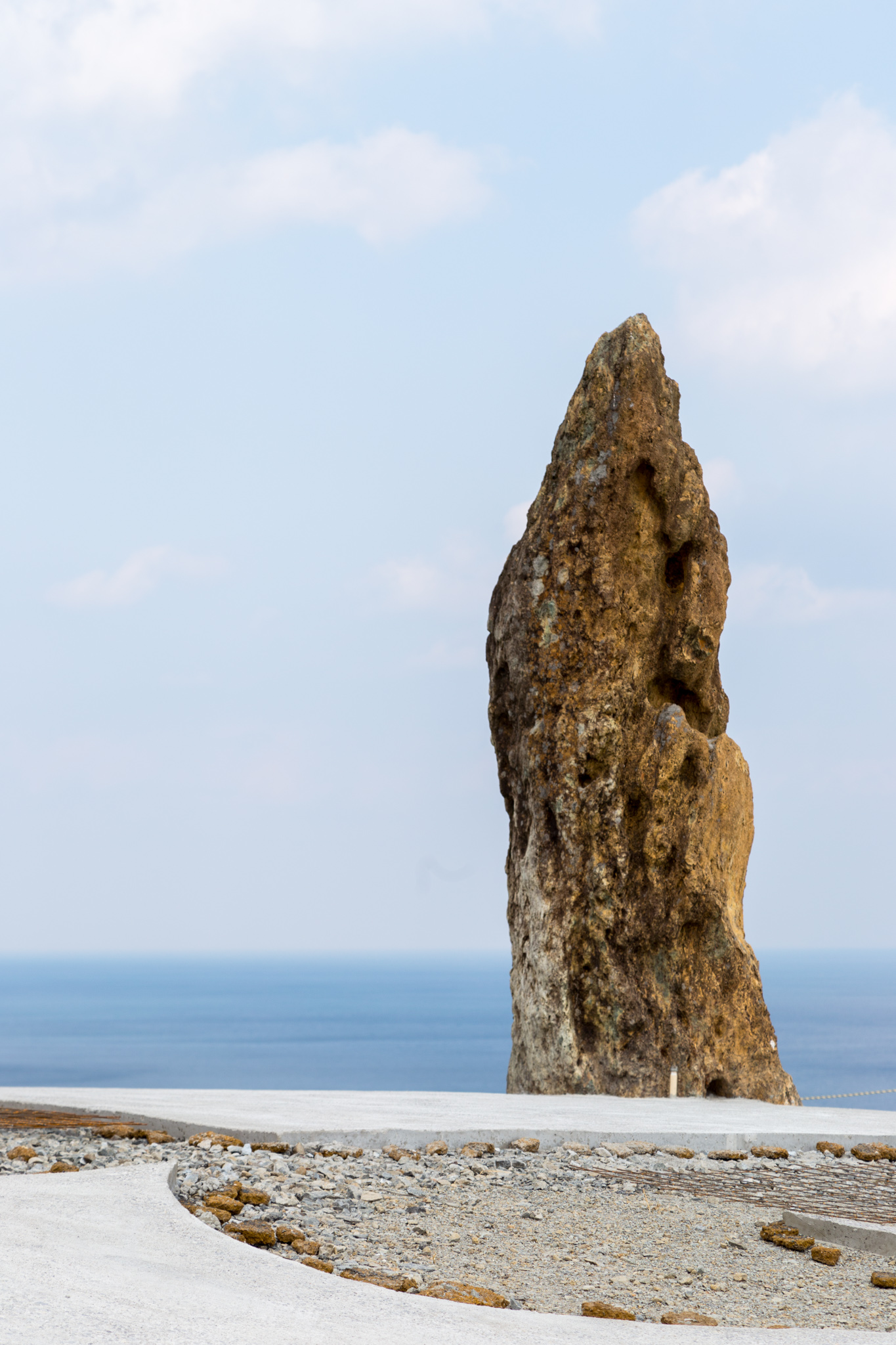
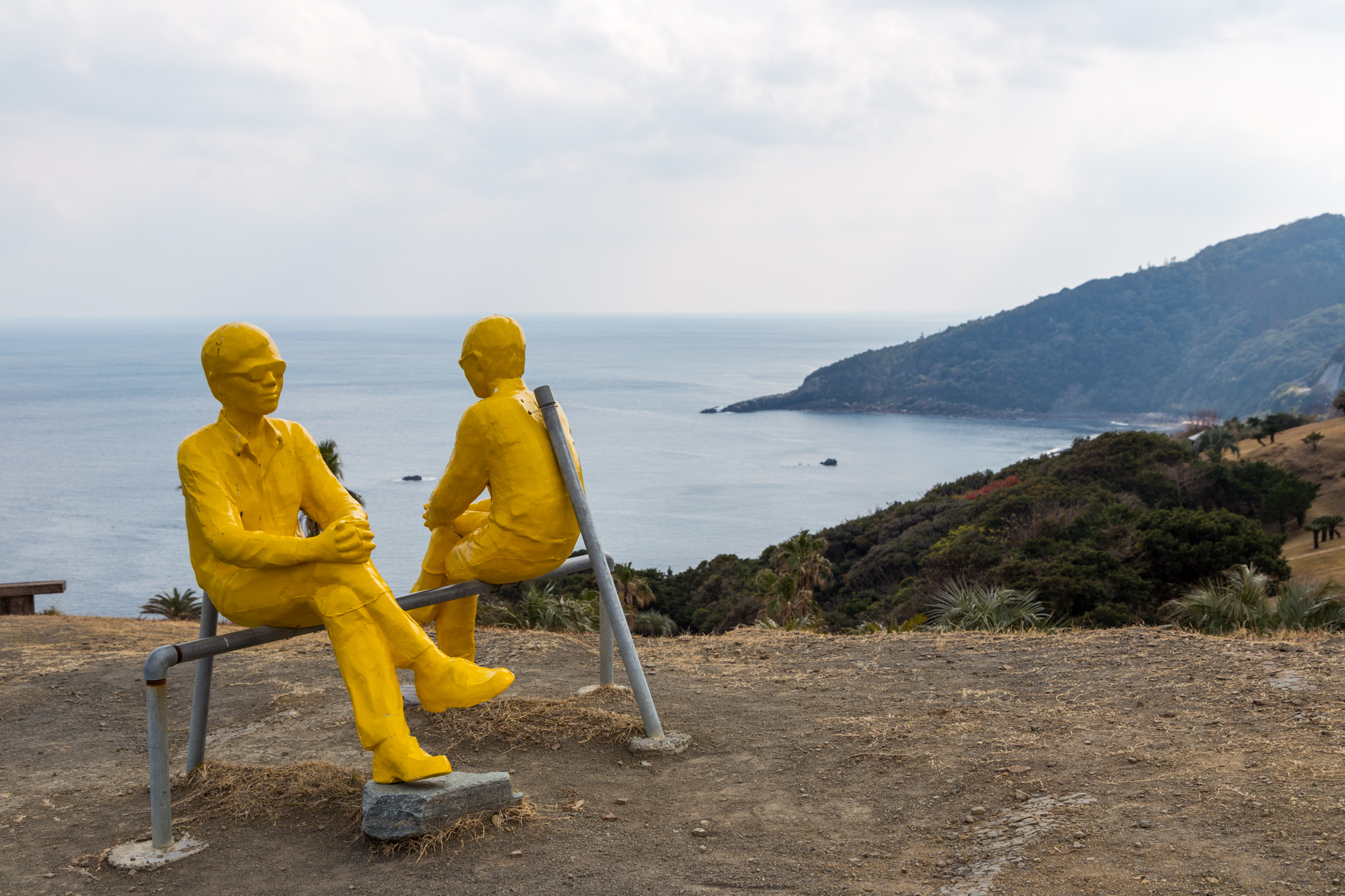
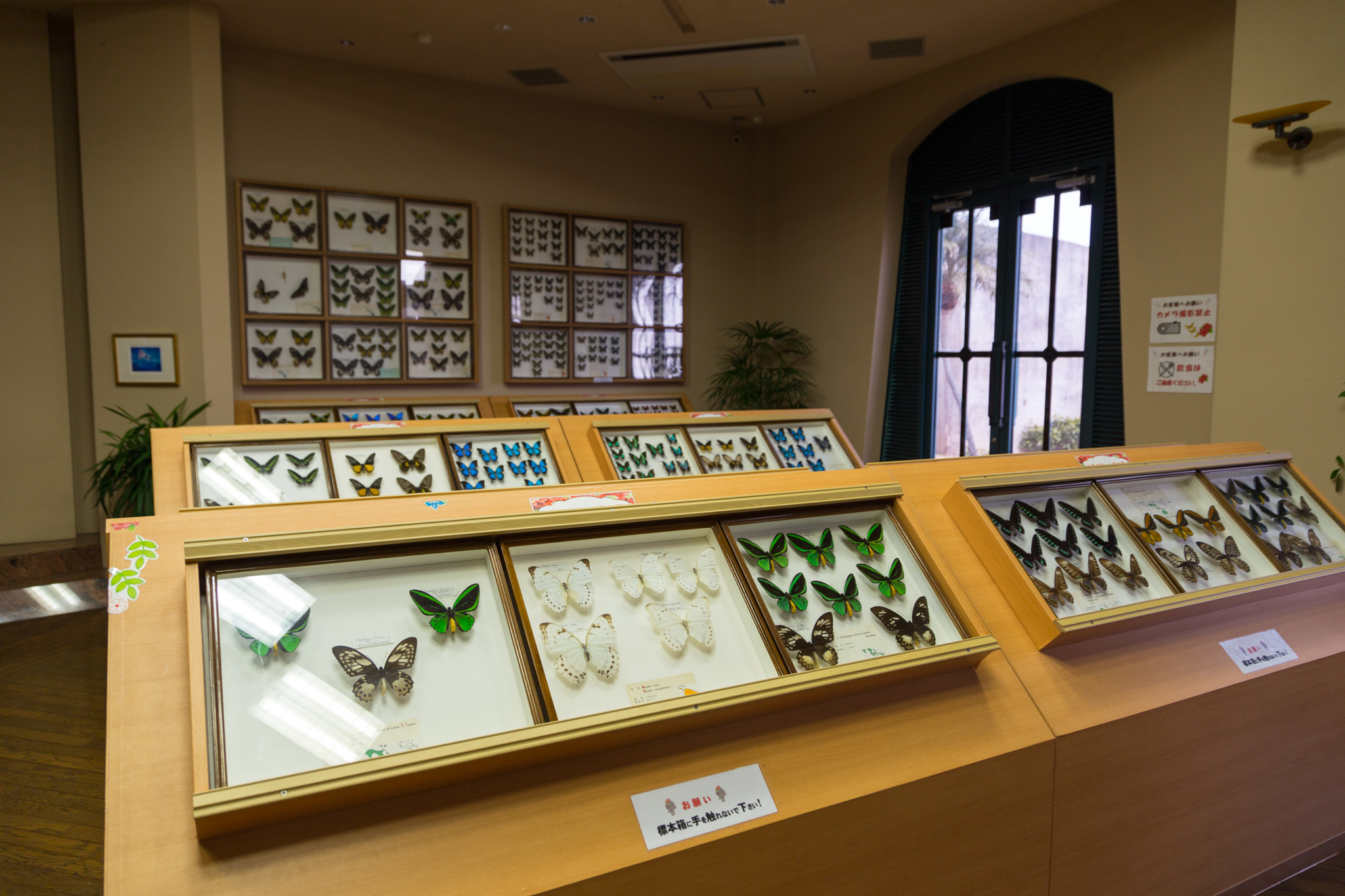
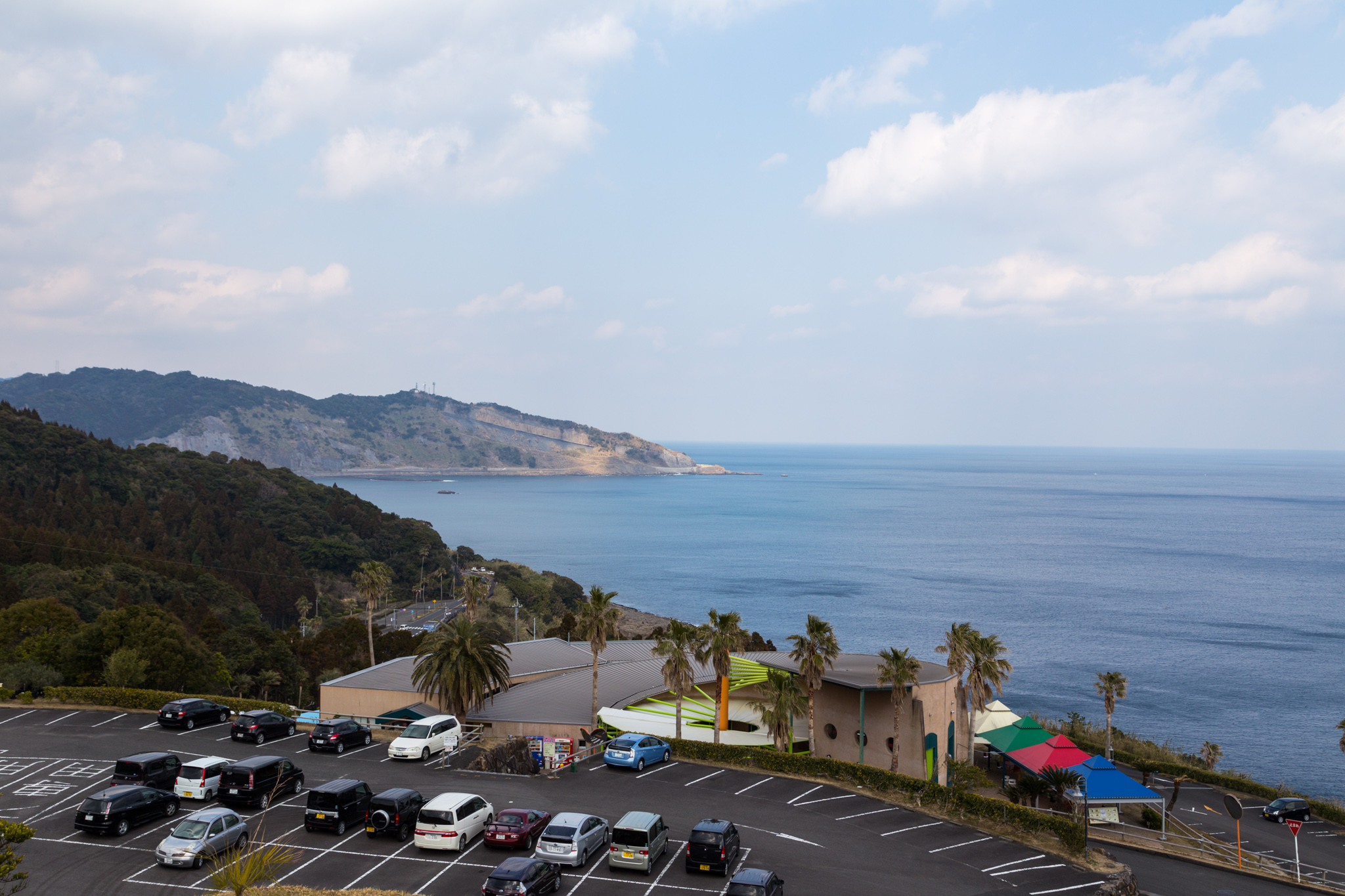
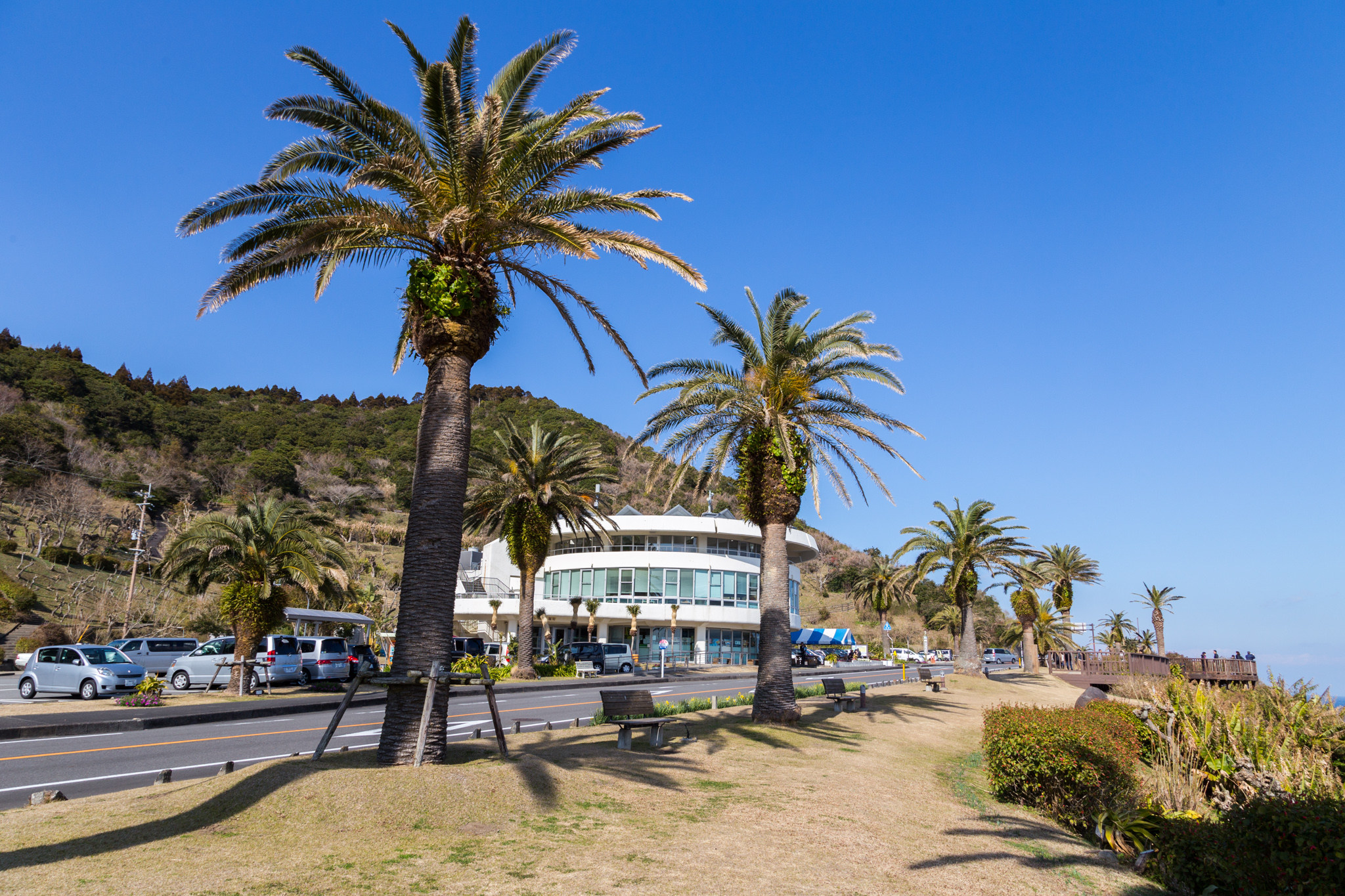

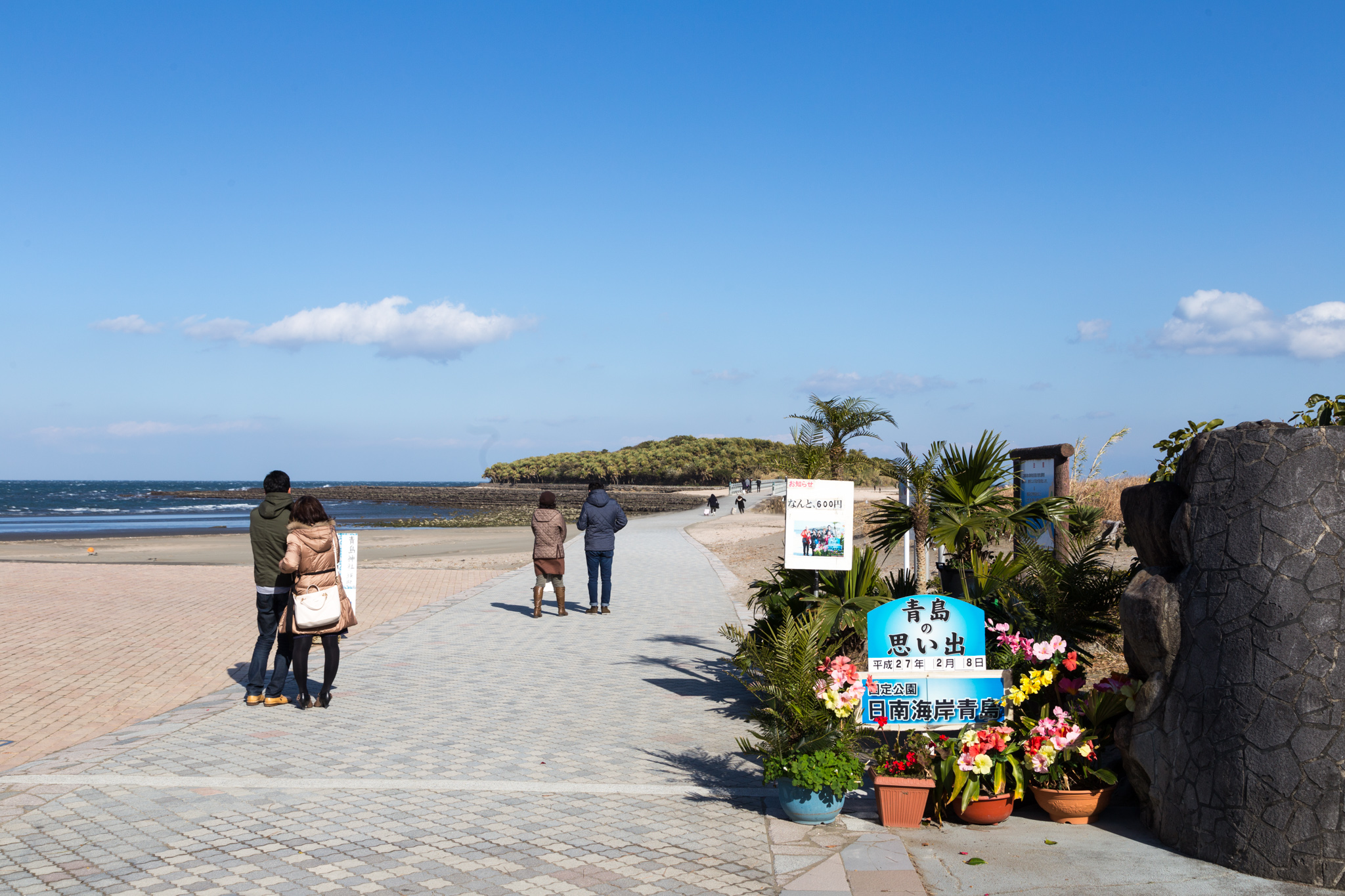
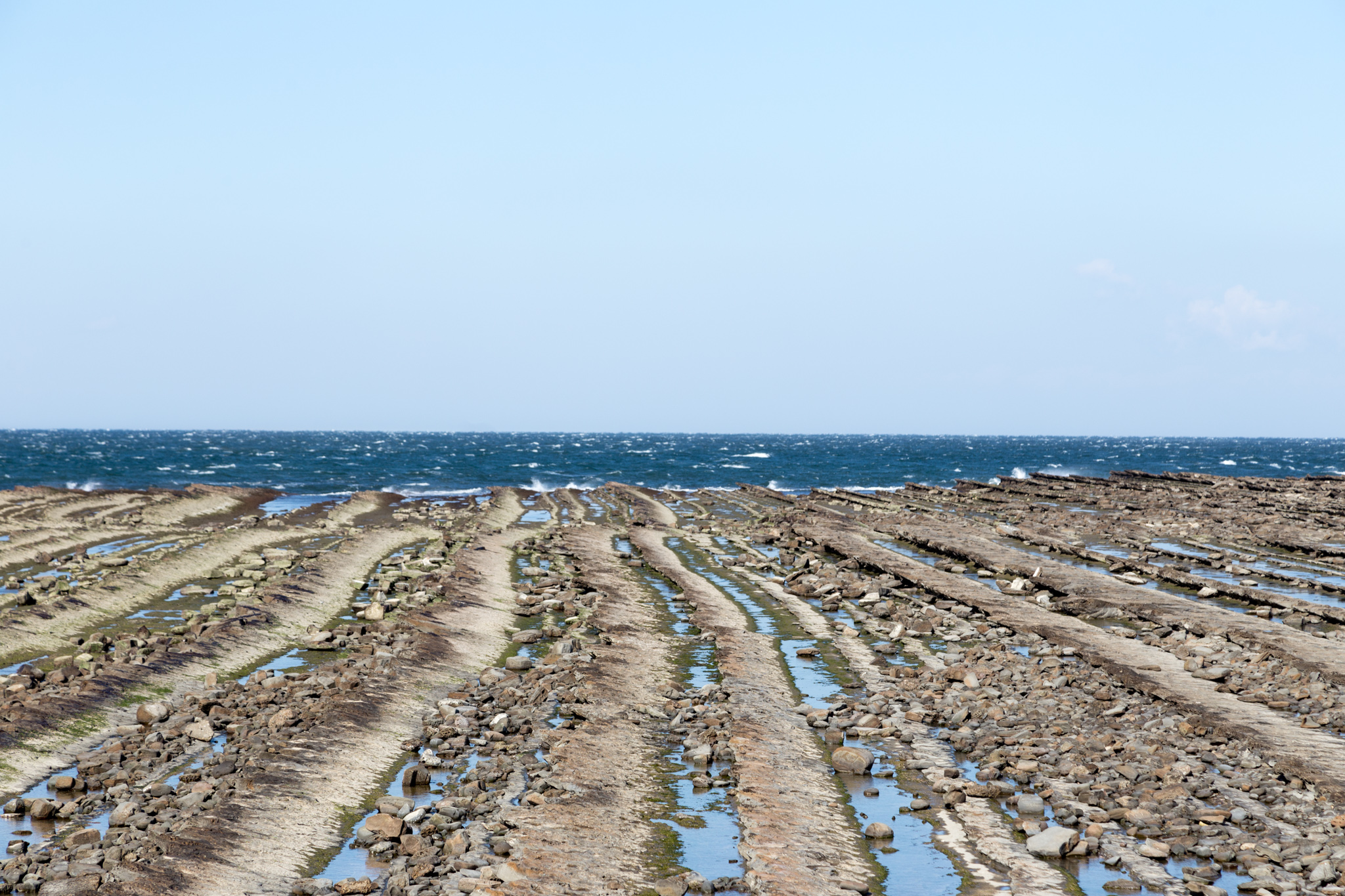

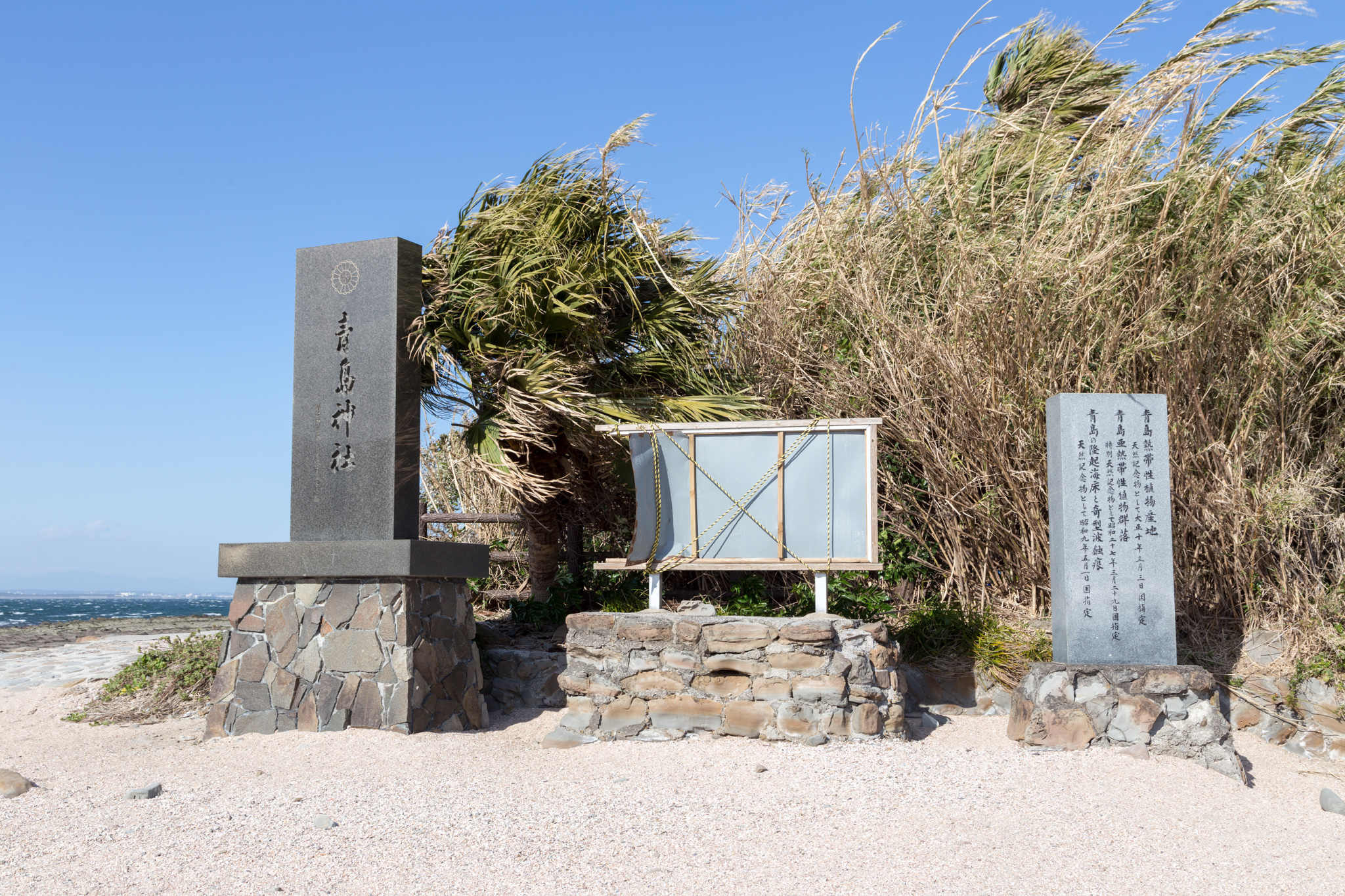
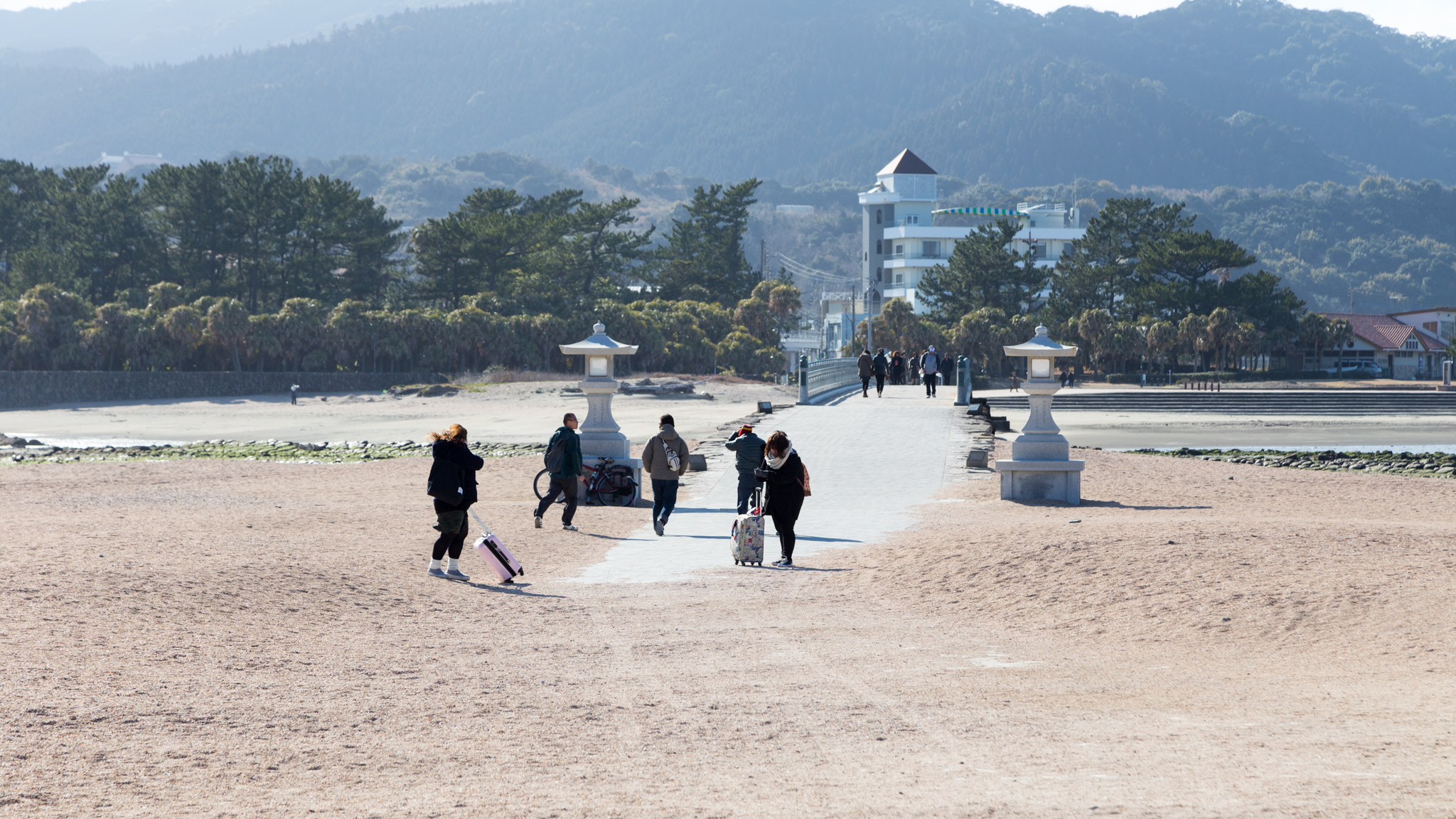
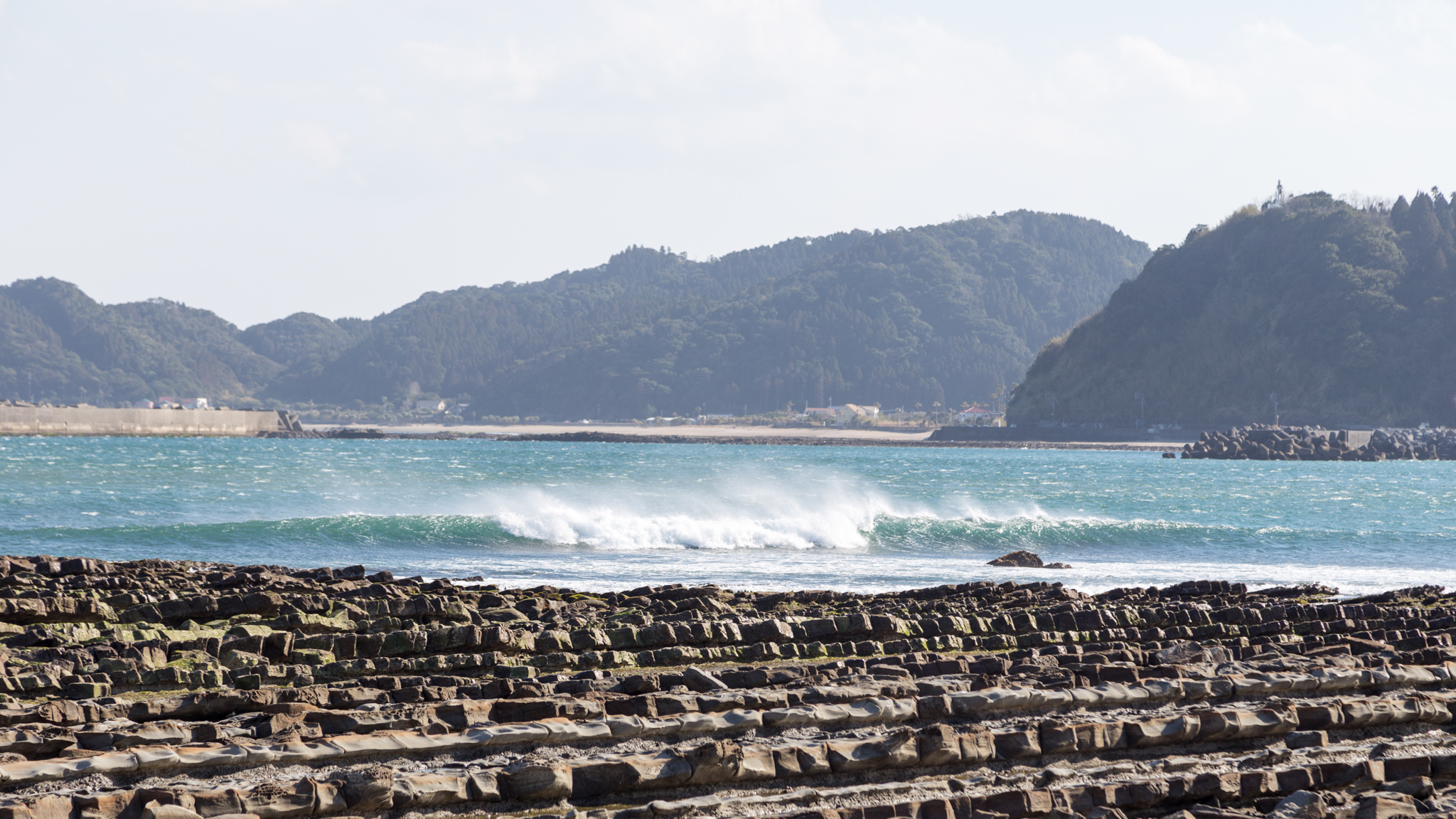
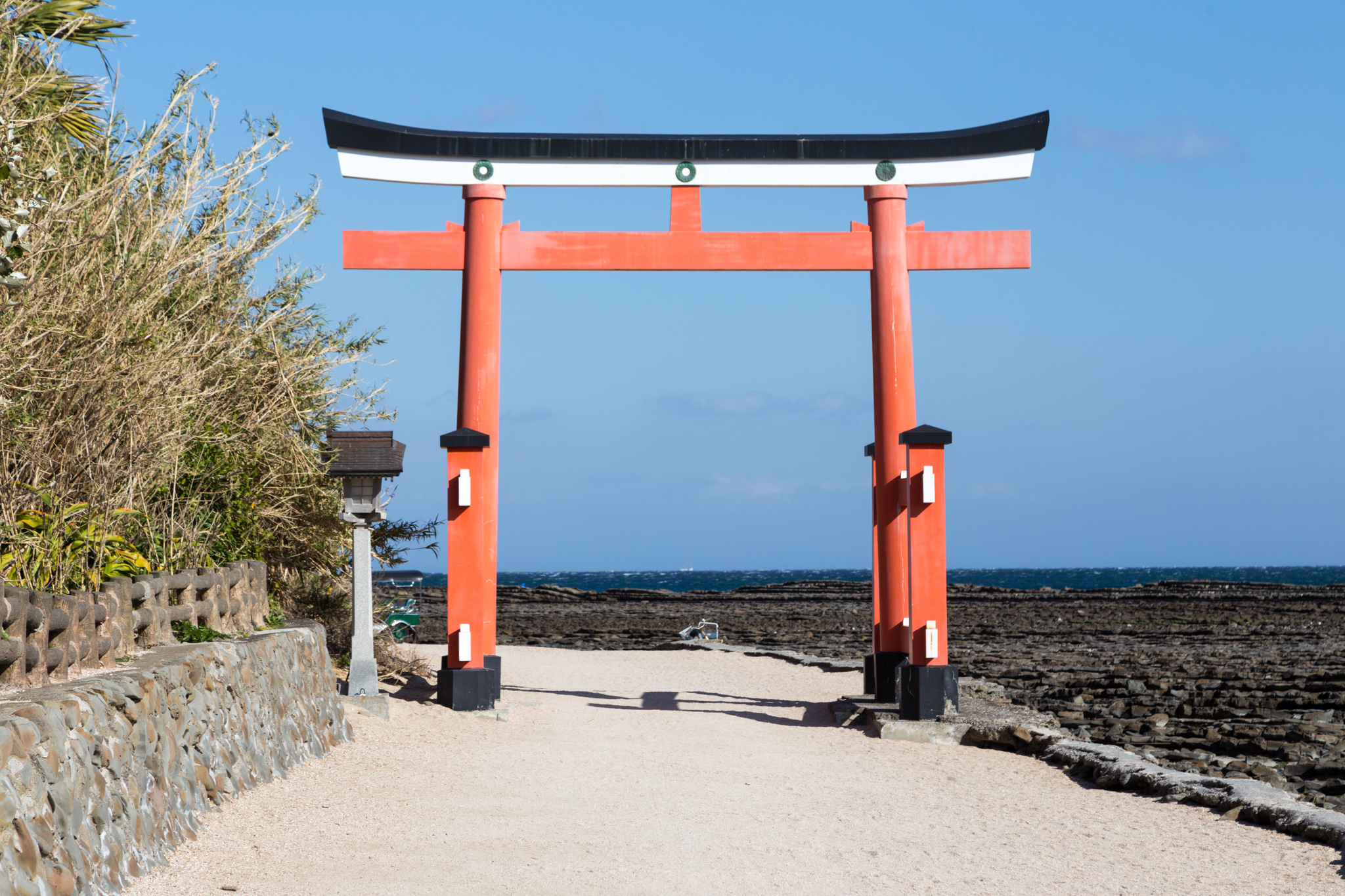


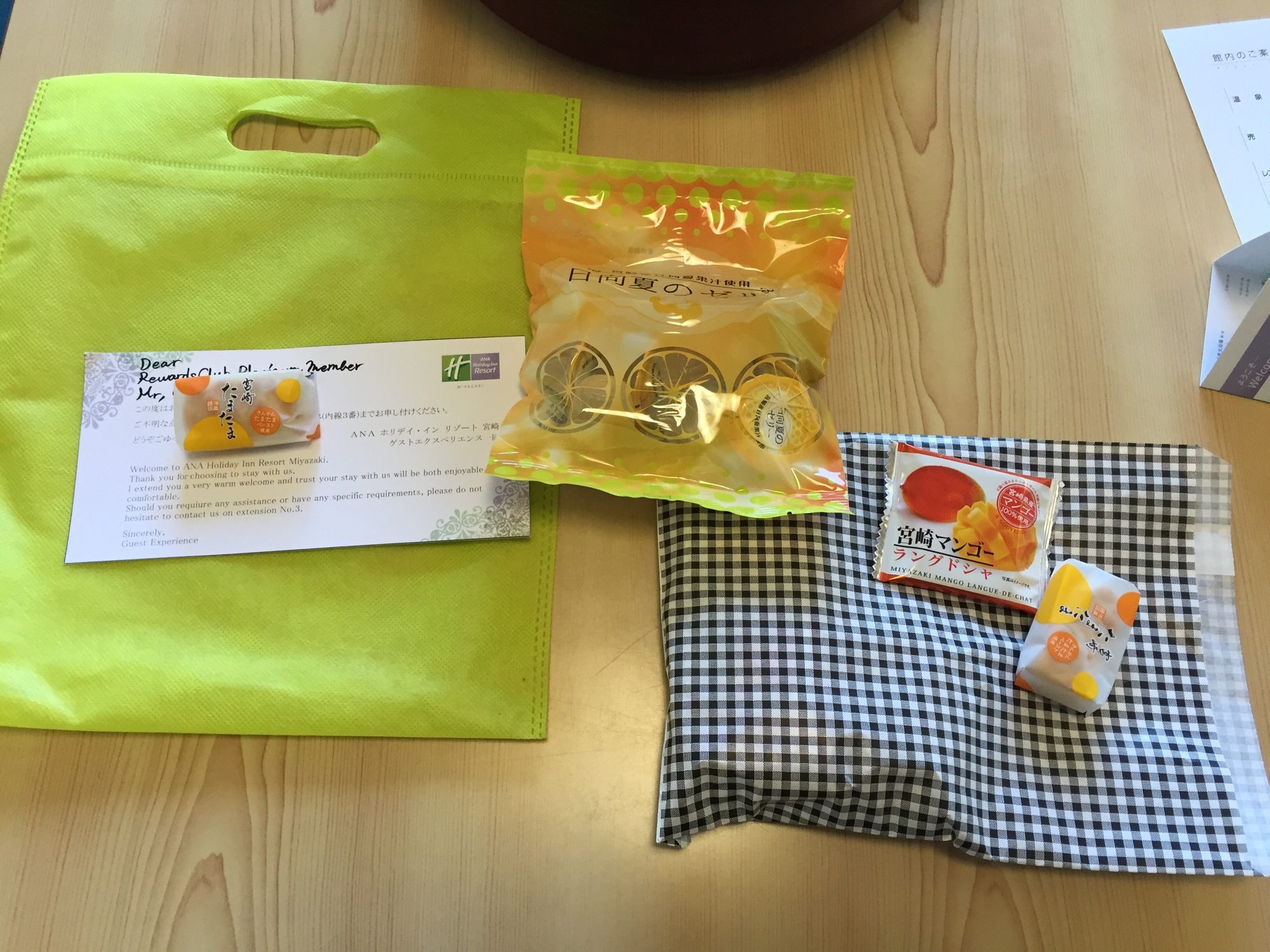
You must log in to post a comment.